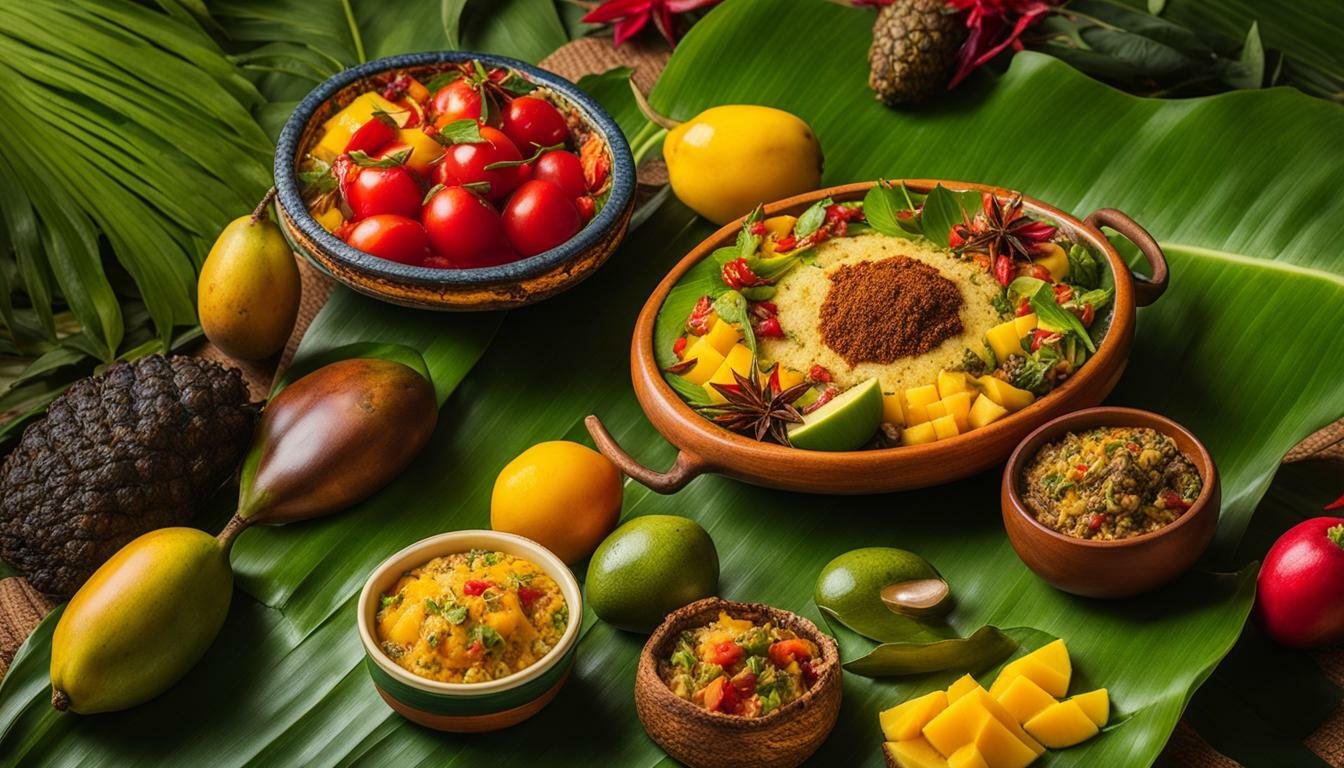Take Me to the Recipes
Forget the ordinary, prepare to be swept away! Jamaica isn’t just a stunning island paradise; it’s a vibrant feast for the senses, especially your taste buds. Imagine fiery jerk chicken infused with smoky, fragrant spices, sweet plantains caramelized to perfection, and fresh ackee and saltfish bursting with salty-savory delight. This is just a taste of the culinary adventure awaiting you in Jamaica.
More Than Just Jerk: Dive beyond the stereotypes and discover a world of flavor. From soulful stews simmered with coconut milk to delicate seafood kissed by the Caribbean Sea, Jamaican cuisine is a tapestry woven with history, culture, and a generous splash of spice. Learn how indigenous influences mingle with colonial legacies, creating dishes like escovitch fish and the iconic rice and peas.
Experience the Island’s Heart: Food in Jamaica isn’t just about sustenance; it’s about community. Gather around a heaping platter of injera, the spongy flatbread that serves as both plate and utensil. Share laughter and stories as you savor stews brimming with local flavors. Discover the Rastafarian movement’s unique approach to Ital cuisine, emphasizing fresh, plant-based dishes made with love and respect for the land.
Your Culinary Escape Awaits: Are you ready to embark on a delicious journey? This article is your passport to exploring the diverse and delectable world of Jamaican cuisine. Uncover regional specialties, hidden gems, and the fascinating stories behind each dish. Learn how to recreate these flavors in your own kitchen and bring a taste of paradise to your table.
Take Me to the Recipes
Key Takeaways – Jamaican Cuisine
- Jamaican cuisine is a fusion of African, European, and Indian flavors.
- The Jamaican Cuisine is a reflection of the country’s diverse cultural heritage.
- Jamaican food culture is known for its bold and flavorful dishes.
- The use of local ingredients is an important aspect of Jamaican cuisine.
- Shared meals are an integral part of Jamaican Cuisine and foster a sense of community.
Where is Jamaica?

Jamaica is a large island in the Caribbean Sea. It lies 630 kilometers north-east of mainland Central America. Its close Neighbors are Haiti, to the east, and Cuba, to the north.

Index to the Contents
- Take Me to the Recipes
- More Articles
- Interesting Facts About Jamaica
- History Of Jamaican Cuisine
- How the Geography and Climate has Affected Jamaican Cuisine
- Understanding the Essence of Jamaican Cuisine
- Exploring Jamaica’s Ingredients: The Flavors of Jamaica
- Jamaican National Dish
- Jamaican Food Culture and Traditions
- Embracing Jamaican Food Culture
- How Healthy is Jamaica Food?
- Jamaican Food Examples
- Popular Jamaican Cuisine Recipes you can Try at Home
- Conclusion
- FAQ’s
You may also be interested in the following articles
- North and South American Cuisine – A Culinary Expedition
- Europe Cuisine: Savor the Continent’s Best Culinary Secrets!
- African Cuisine: Discover the Bold Flavors & Global Charm!
- Asian Cuisine Unlock its Secrets – Taste, Health & Global Influence!
Savor iconic Jamaican Food – Click on each tantalizing picture to open up the Recipe
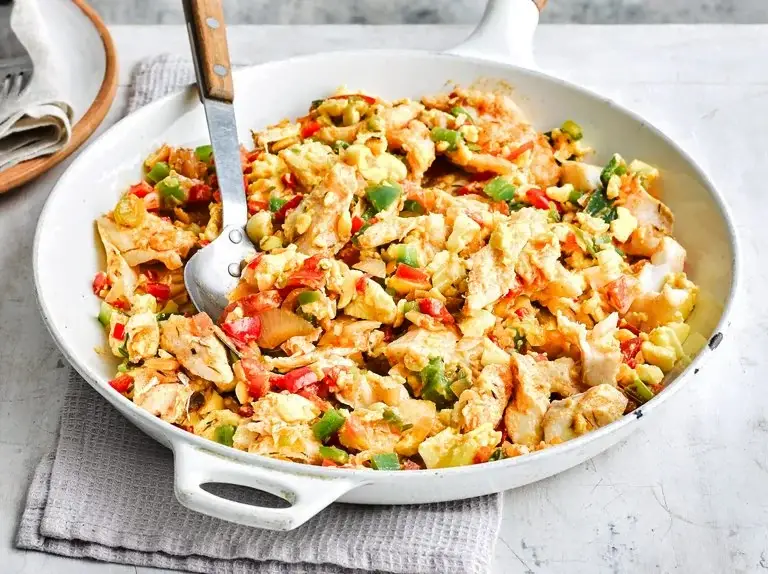
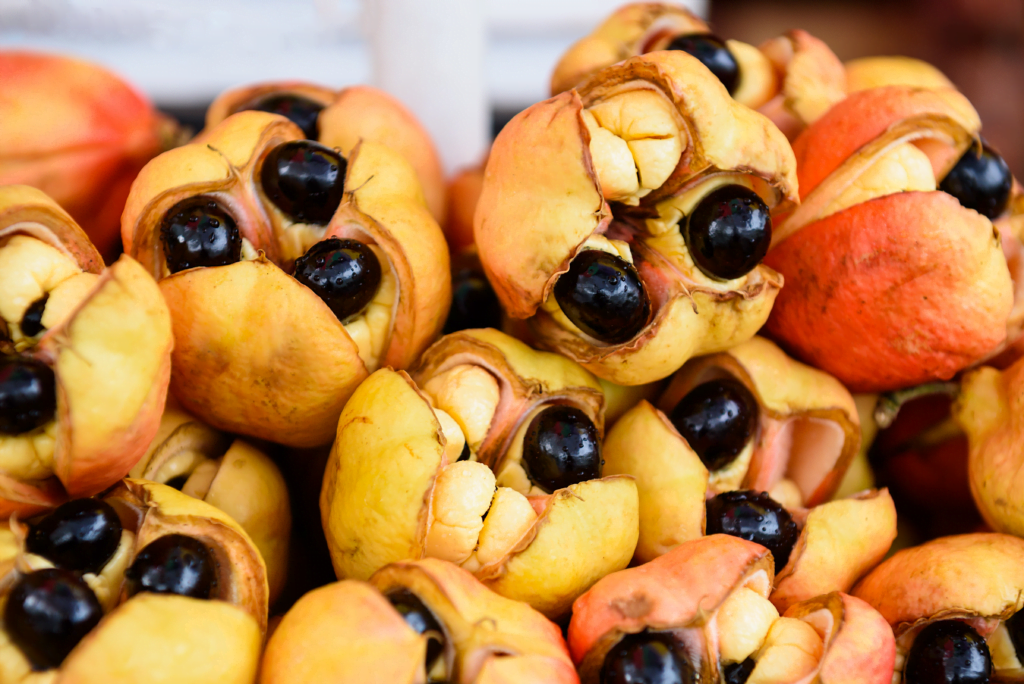

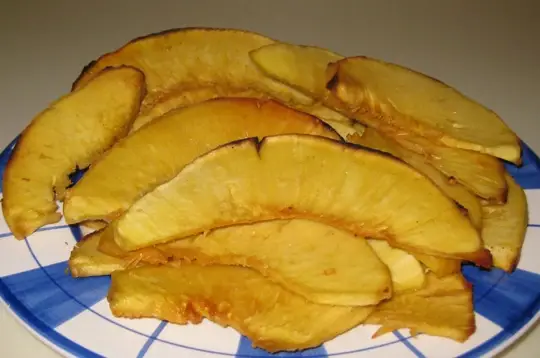
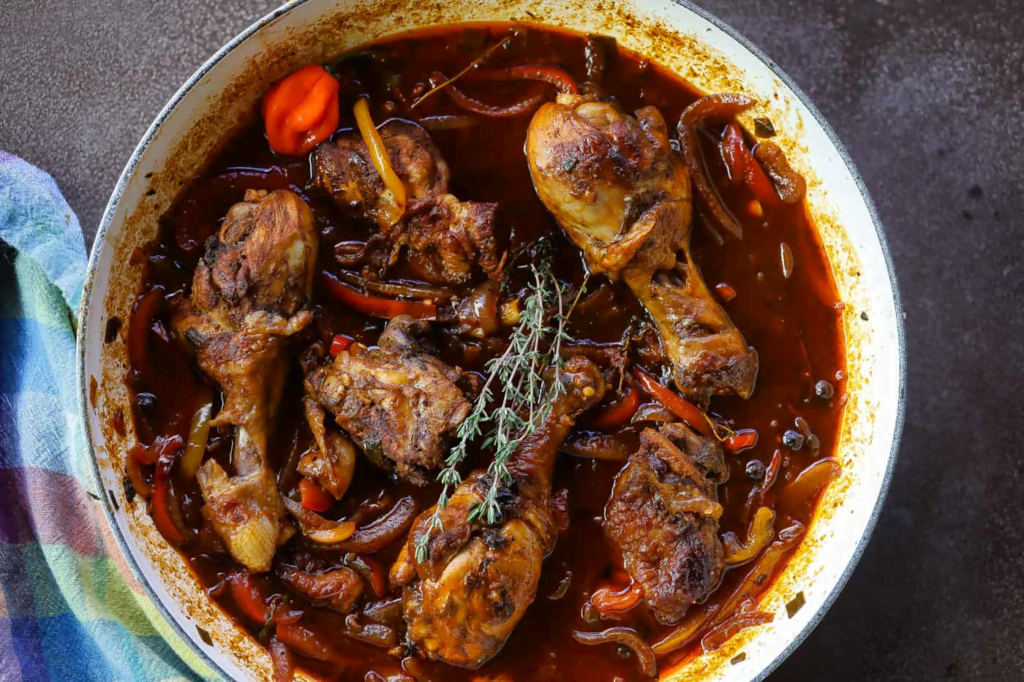

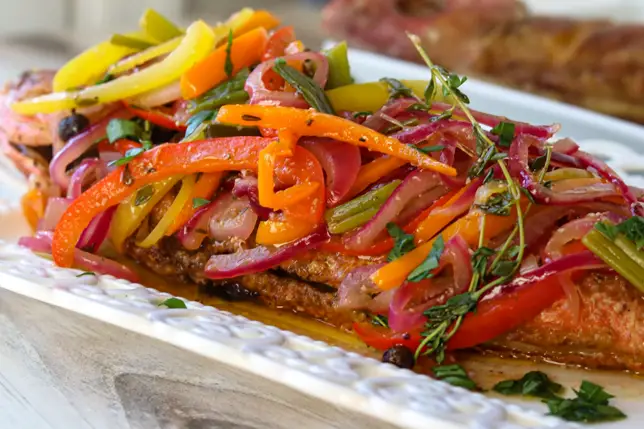

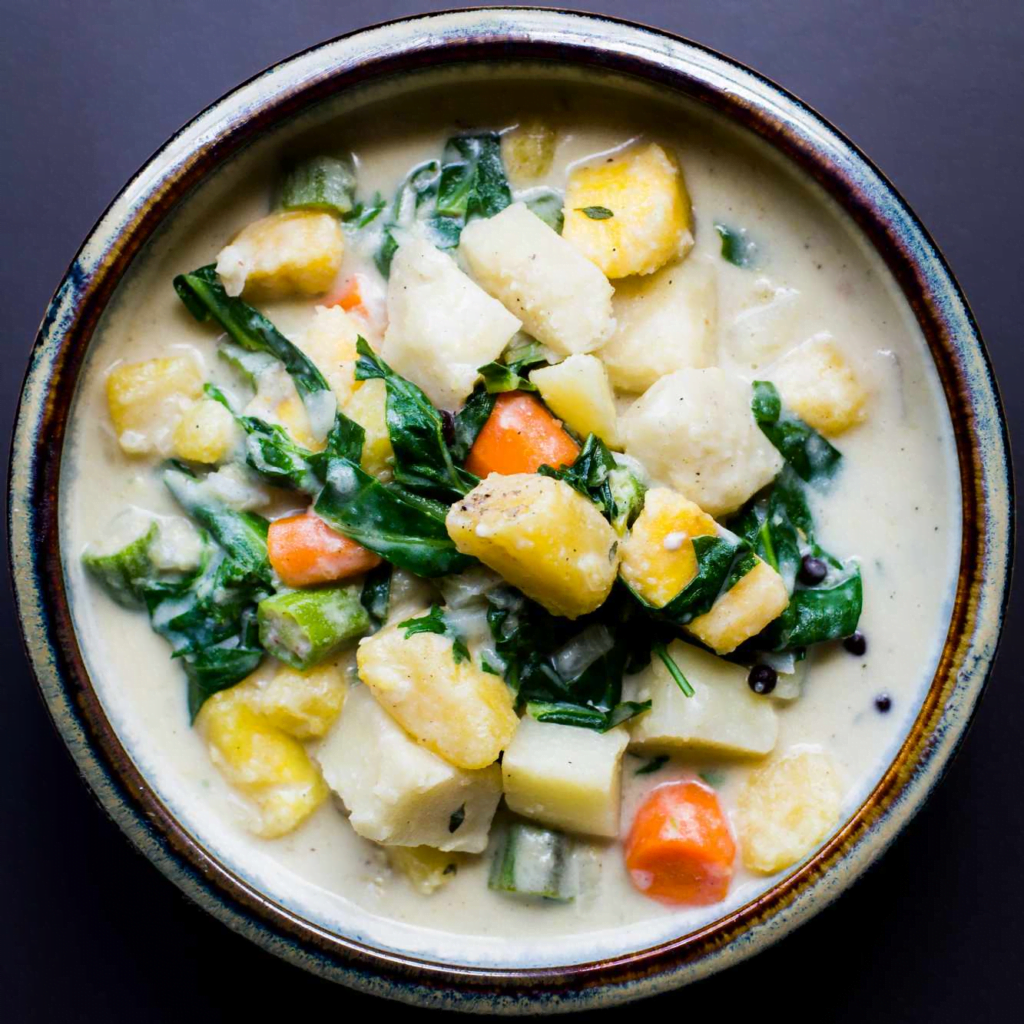
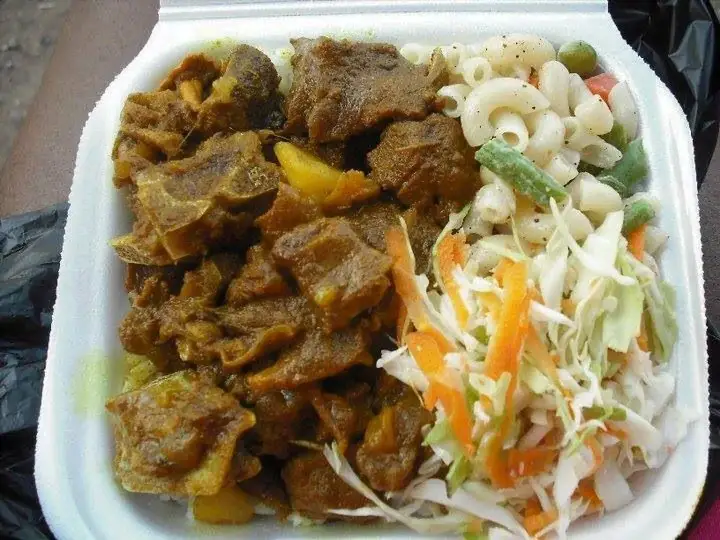
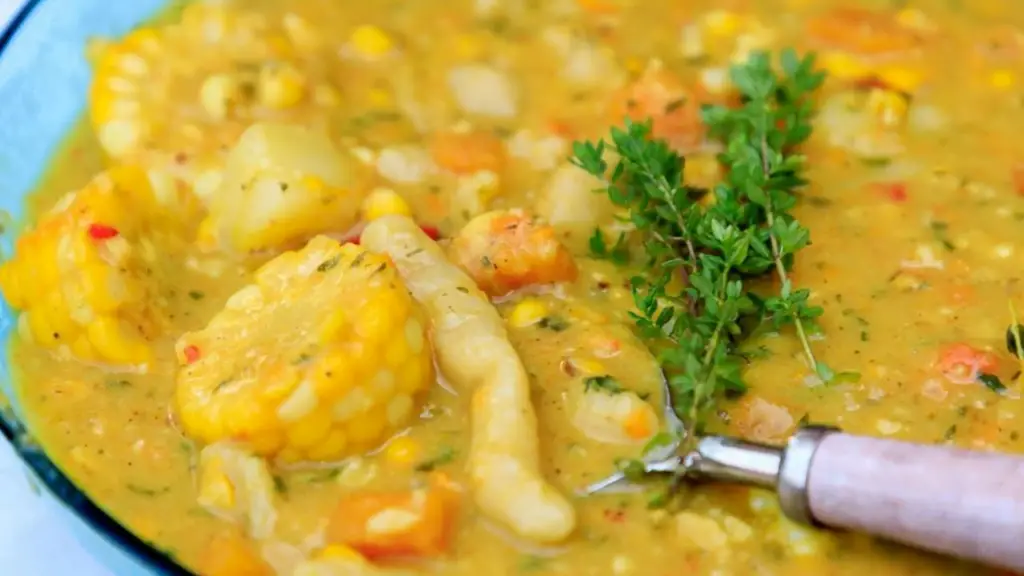
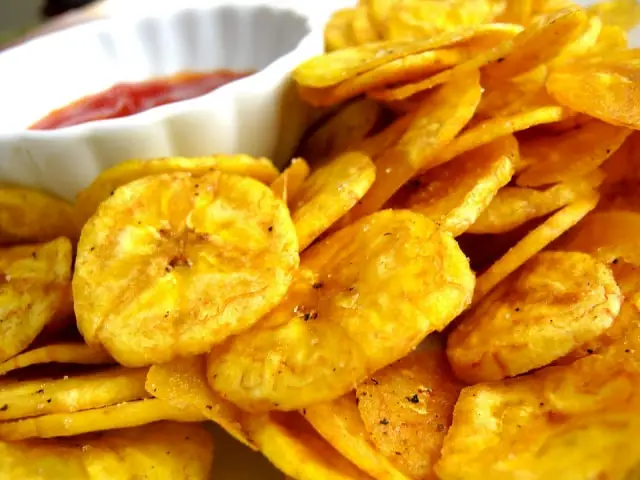

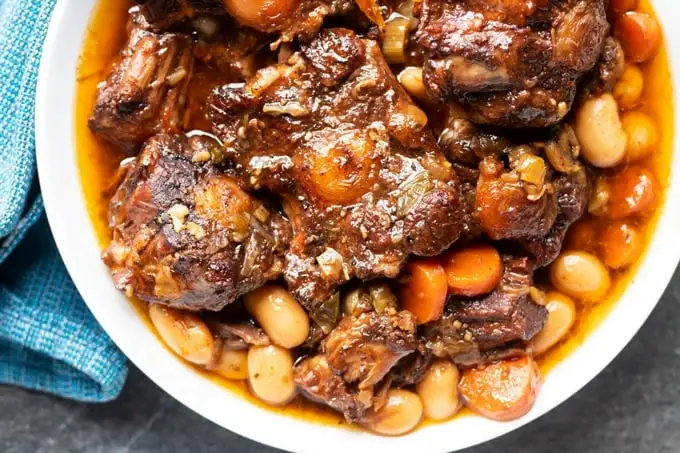
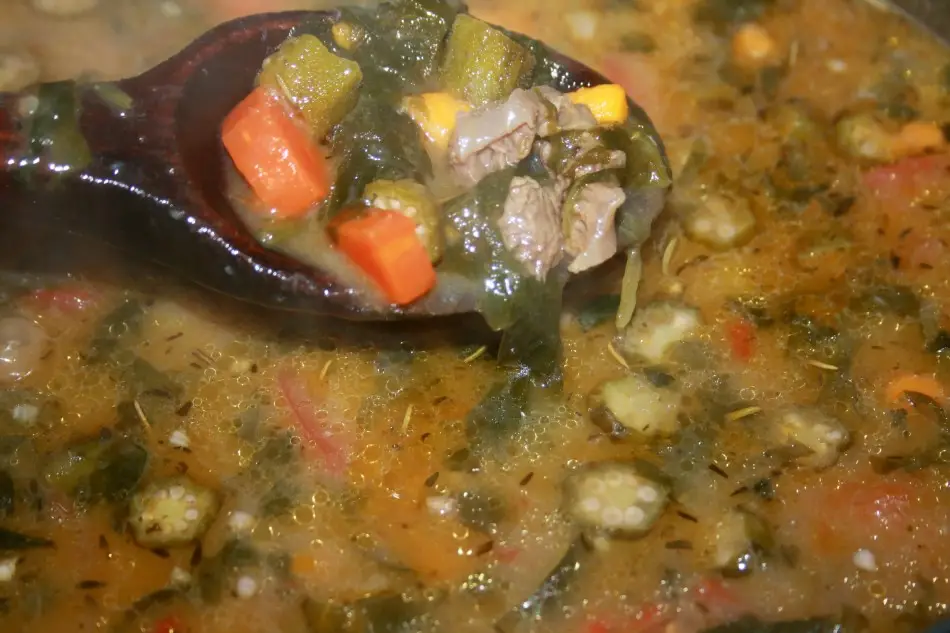

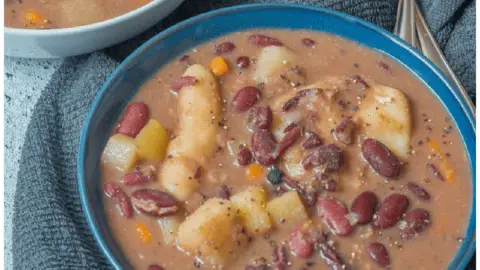
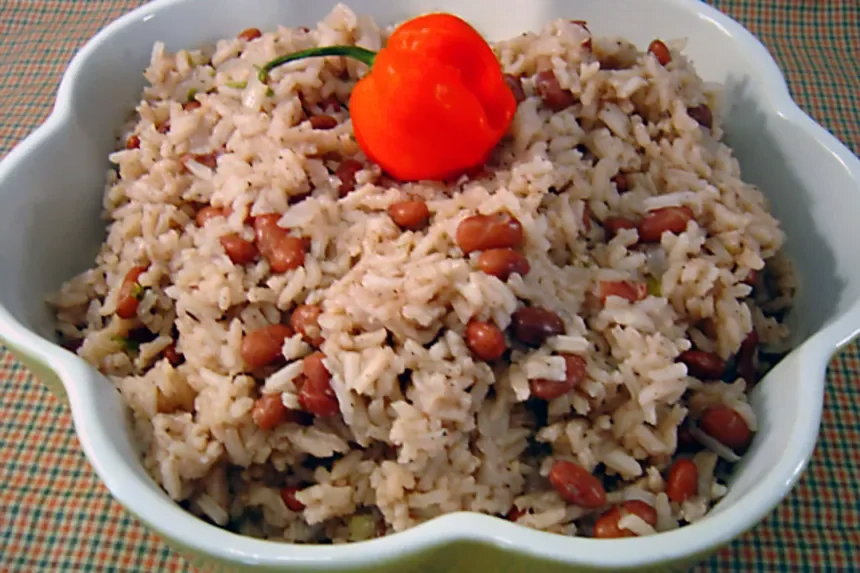
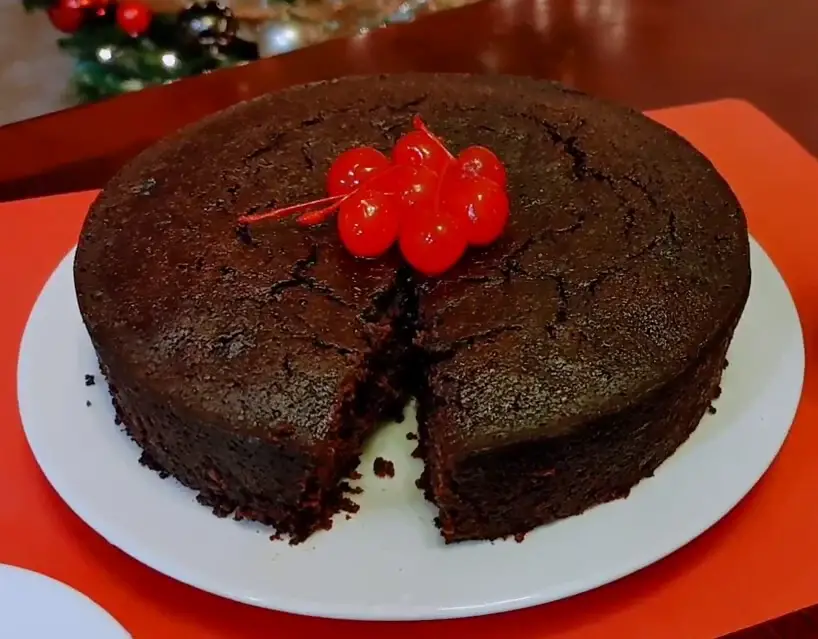
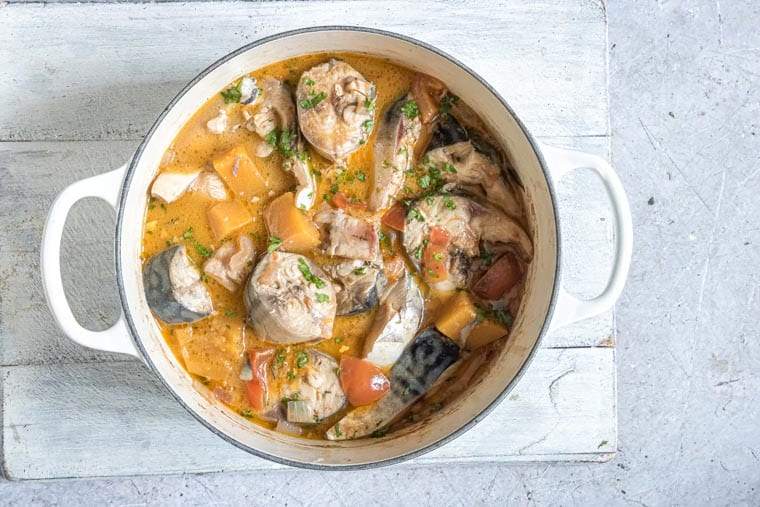
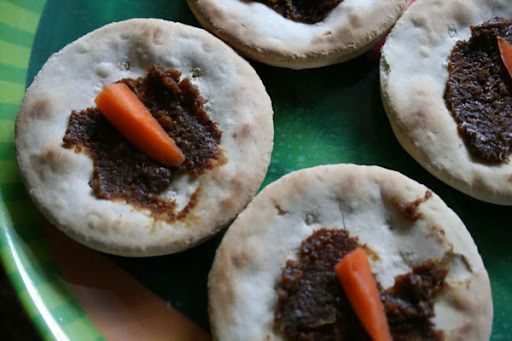
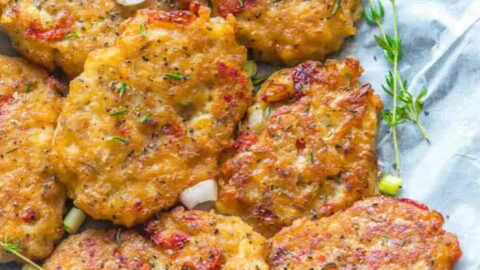
Interesting Facts About Jamaica
Bobsleighing in the Tropics

Jamaica, a tropical island, gained international attention for its unexpected participation in the Winter Olympics. The Jamaican bobsleigh team made their debut in 1988, inspiring the popular movie “Cool Runnings.”
No Snakes Allowed
One peculiar fact about Jamaica is its snake-free status. The island is home to various wildlife, but there are no native snake species. Legend has it that a species of snake introduced by the Arawak people was eradicated centuries ago.
Jamaican Blue Mountain Coffee
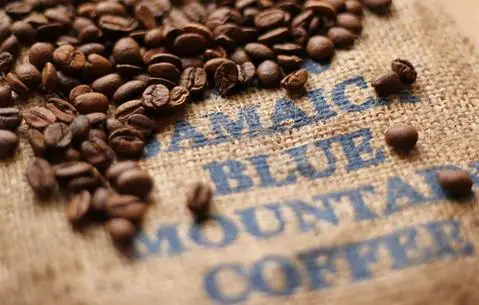
Regarded as one of the world’s best and most expensive coffees, the Jamaican Blue Mountain coffee is grown at elevations over 2,000 feet. The unique climate and soil contribute to its exceptional flavor.
Port Royal – The Wickedest City on Earth
In the 17th century, Port Royal, Jamaica, earned the title of the “Wickedest City on Earth.” The notorious pirate haven was known for its lawlessness, debauchery, and thriving black market.
Jamaican Patois
The colorful Jamaican Patois, a Creole language, has its roots in the island’s history of slavery and diverse cultural influences. It’s a fascinating blend of English, African languages, Spanish, and indigenous Arawakan elements.
Blue and John Crow Mountains

Recognized as a UNESCO World Heritage Site, the Blue and John Crow Mountains in Jamaica protected the Maroons, escaped slaves who created their own independent communities in the rugged terrain.
National Hero Marcus Garvey
Jamaica’s first national hero, Marcus Garvey, was a visionary leader and proponent of Pan-Africanism. His teachings and philosophies had a profound impact on civil rights movements worldwide.
The Legend of the White Witch

Rose Hall Great House in Montego Bay is rumored to be haunted by the ghost of Annie Palmer, the “White Witch.” Legends tell of her dark practices and the eerie occurrences within the historic mansion.
Jamaica’s National Dish – Ackee and Saltfish
The national dish of Jamaica, ackee and saltfish, is made from ackee fruit and salted cod. Interestingly, ackee is toxic if not ripe, adding an element of caution to this popular culinary delight.
Bob Marley’s Legacy

The iconic reggae musician Bob Marley was born in Nine Mile, Jamaica. His music, deeply rooted in Rastafarianism, continues to resonate globally, making him a cultural and musical legend.
The History of Jamaica and how it has affected the Cuisine
Imagine your taste buds dancing to a vibrant rhythm, a symphony of influences that tell the story of Jamaica itself. Embark on a delicious journey through Jamaican cuisine, where every bite whispers tales of ancient Arawak traditions, fiery Spanish encounters, and the resilience of enslaved Africans who poured their culinary soul into the island.
Pre-Columbian Era: Arawak Roots

Long before European sails dotted the horizon, the Arawak people laid the foundation for Jamaican flavors. Their legacy lives on in the fiery kick of scotch bonnet peppers, the sweet comfort of sweet potatoes, and the versatile cassava root, still playing starring roles in countless dishes today.
Spanish Arrival: A Touch of Escovitch (Early 16th Century)
The Spanish brought not only their conquistador spirit but also culinary treasures. The tangy escovitch fish, a close relative of the Spanish escabeche, became a beloved staple, while the ackee tree, now central to the iconic ackee and saltfish, arrived with West African influences during this period.
British Rule: Pastries, Patties, and Plenty of Sugar (17th Century)

British colonization left an undeniable mark. From delectable pastries and baked goods to the booming sugar industry, the British influence is evident. Even the famous Jamaican patty, a savory explosion of spiced meat, owes its roots to this era.
African Legacy: A Fusion of Flavors and Resilience (Slavery Era)
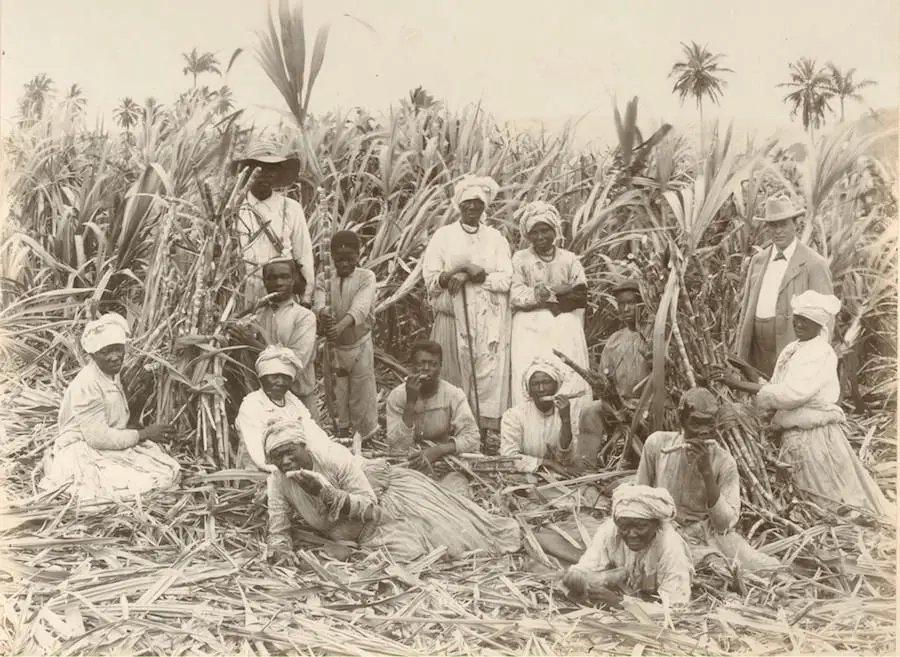
Enslaved Africans brought their own culinary wisdom, adapting it to the local bounty. Dishes like callaloo, inspired by the Angolan calulu, and the versatile plantains became staples. Their legacy is a testament to resilience and resourcefulness, woven into the very fabric of Jamaican cuisine.
Beyond Slavery: Chinese, Indian, and Rastafarian Influences (Post-Emancipation)
After emancipation, the arrival of Chinese and East Indian indentured laborers further enriched the culinary landscape. Roti and curry goat are just a few examples of dishes that showcase the influence of these communities.
The 20th century saw the rise of the Rastafarian movement, known for their vegetarian approach. They introduced unique dishes like Ital stews, emphasizing fresh ingredients and minimal salt, while embracing classics like jerk pork with a twist.
A Symphony of Flavors
Jamaican cuisine is a vibrant tapestry, each thread woven from a different era and culture. From the fiery Arawak peppers to the comforting British bakes, from the legacy of enslaved Africans to the unique Rastafarian approach, every bite tells a story. So, grab your fork and join us on this delicious exploration of Jamaica’s culinary heritage!
References
How the Geography and Climate has Affected Jamaican Cuisine

Imagine lush, sun-drenched fields bursting with mangoes, ackee, and plantains. Picture turquoise waters teeming with snapper and kingfish. This is Jamaica, where geography and climate paint a vibrant culinary canvas, one bursting with bold spices, fresh seafood, and a rich tapestry of cultural influences.
Island Bounty: Nature’s Spice Rack

Jamaica’s tropical embrace nurtures a cornucopia of flavors. From the fiery kick of Scotch bonnet peppers to the fragrant warmth of allspice, spices are the lifeblood of the cuisine.
Imagine dishes like jerk chicken, slow-cooked over pimento wood, its smoke melding with the spice rub for an unforgettable burst of flavor.
Seafood Symphony: A Taste of the Caribbean

Surrounded by the Caribbean Sea, fresh seafood is a cornerstone of Jamaican cuisine. Dive into steaming bowls of fish tea, a flavorful broth brimming with local catch.
Savor succulent jerked fish, infused with the island’s signature spice blend. Each bite whispers tales of coastal communities and their unique cooking techniques.
History’s Legacy: A Fusion of Flavors
Jamaica’s culinary story is woven with threads from various cultures. The Arawak people left their mark with cassava, sweet potatoes, and yams. The Spanish influence is evident in the tangy escovitch (marinated fish) and the beloved ackee fruit.
And British colonization introduced the tradition of teatime, offering a delightful contrast to the island’s fiery flavors.
Rastafarian Rhythms: Ital Cuisine’s Harmony

Jamaica’s Rastafarian movement brought forth the concept of Ital cuisine, emphasizing fresh, plant-based dishes. Savor the soul-soothing comfort of ital stews, brimming with vibrant vegetables and seasoned with minimal salt.
This approach celebrates nature’s bounty and reflects the values of a unique cultural perspective.
Facing the Future: Climate’s Challenge
Climate change casts a shadow, with extreme weather events threatening agricultural production. But the Jamaican spirit remains resilient. Initiatives like climate-smart farming offer hope for a sustainable future, ensuring this vibrant cuisine continues to flourish.
Join the Culinary Journey
Dive deeper into Jamaica’s culinary world! Discover hidden gems, explore regional specialties, and learn the stories behind each dish. This is more than just food; it’s a cultural experience waiting to be savored. So, grab your virtual fork and join us on this delicious adventure!
References
- JAMAICA INFORMATION SERVICE
- Ensuring food systems in Jamaica in the face of climate change
- United Nations – Jamaica
- CLIMATE AND HEALTH COUNTRY PROFILE
Understanding the Essence of Jamaican Cuisine
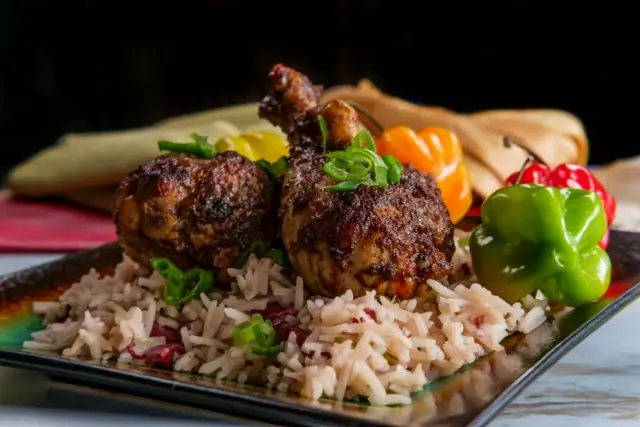
Imagine vibrant markets bursting with sunshine-kissed mangoes and fiery scotch bonnet peppers. Picture smoky wood fires slow-cooking jerk chicken, its aroma infusing the air with a dance of spices.
This, my friend, is a glimpse into the essence of Jamaican cuisine, a tapestry woven with history, culture, and an undeniable zest for life. More than just delicious dishes, it’s a journey of flavors that tells the story of the island itself.
Roots Run Deep: A Fusion of Influences
Jamaica’s culinary tale begins with the Arawak people, who laid the foundation with cassava, sweet potatoes, and yams. Then came the Spanish, leaving their mark with the tangy escovitch and the iconic ackee fruit.
The British influence introduced teatime and delectable pastries, while Africans brought their soul-warming stews and love for plantains. Each thread woven into the fabric of Jamaican cuisine adds a unique layer of flavor and cultural significance.
Spice is Life: A Symphony of Flavor
Close your eyes and imagine the warmth of allspice, the fiery kick of Scotch bonnet peppers, the earthy aroma of thyme, and the subtle sweetness of ginger. This symphony of spices defines Jamaican cuisine, creating dishes that tantalize your taste buds and ignite your senses.
From the slow-cooked jerk to the vibrant curries, each bite pulsates with a unique flavor profile that reflects the island’s multicultural spirit.
Beyond the Plate: Culture on a Fork
Jamaican cuisine is more than just food; it’s a window into the island’s soul. Communal dining is central to the experience, with families and friends gathering around a platter of injera, a spongy flatbread used to scoop up flavorful stews.
The Rastafarian movement offers a glimpse into vegetarian delights like ital stews, emphasizing fresh, local ingredients and highlighting a mindful approach to eating. Every dish, every tradition, whispers stories of resilience, resourcefulness, and a deep connection to the land.
Navigating the Future: Challenges and Hope
Like any vibrant story, Jamaican cuisine faces challenges. Climate change threatens agricultural production, and access to healthcare remains a concern.
Yet, the Jamaican spirit is one of perseverance. Initiatives like climate-smart farming offer hope for a sustainable future, ensuring this rich culinary heritage continues to flourish.
Join the Culinary Adventure
Are you ready to embark on this delicious journey? This chapter is just the beginning.
Dive deeper into regional specialties, uncover fascinating food traditions, and learn the stories behind each dish. Jamaica’s cuisine is more than just a meal; it’s an invitation to celebrate culture, connect with the land, and experience the island’s vibrant spirit through your taste buds.
So, come explore, savor, and discover the true essence of Jamaican cuisine!
Exploring Jamaica’s Ingredients: The Flavors of Jamaica

Jamaica’s flavors are as vibrant and diverse as its landscapes, from the Blue Mountains to the sunny beaches. The island’s fertile soil and tropical climate yield a bounty of fruits and vegetables, while the surrounding seas provide an array of seafood.
Key ingredients in Jamaican cuisine include:
- Spices: Allspice, also known as pimento, is native to Jamaica and is a cornerstone of many spice blends. Nutmeg, cinnamon, and ginger are also widely used.
- Herbs: Thyme and scallion are staples in Jamaican cooking, providing a fresh, aromatic base for many dishes.
- Fruits: Mango, pineapple, papaya, and the indigenous ackee are central to both sweet and savory dishes.
- Vegetables: Callaloo, a leafy green, and breadfruit are popular, as are sweet potatoes and yams.
- Proteins: Seafood, goat, pork, and chicken are commonly featured, often marinated or seasoned with jerk spice.
- Legumes: Red beans, gungo peas, and black-eyed peas are important for dishes like rice and peas.
- Chilies: Scotch bonnet peppers are a defining feature of Jamaican cuisine, known for their fiery heat and fruity flavor.
These ingredients are the heart and soul of Jamaican cooking, creating a cuisine that is as warm and welcoming as the island itself.
Jamaican National Dish

The traditional of ackee fruit and salted saltfish combination of ackee fruit and salted codfish is a favorite among Jamaicans and is often enjoyed for breakfast. The fruit has a unique taste and texture which resembles scrambled eggs when cooked.
The dish is typically seasoned with herbs and spices, such as onions, scallions, and peppers, adding a burst of flavor.
Jamaican Food Culture and Traditions

Now that we’ve delved into the rich and diverse flavors of Jamaican cuisine and uncovered some of the most popular recipes, it’s time to explore the vibrant food culture surrounding it.
Food is an integral part of Jamaican society, and the use of local ingredients is essential to traditional recipes. The sense of community fostered through shared meals is also a significant aspect of Jamaican food culture.
One of the most significant examples of this is the Jamaican tradition of “jerk.” Originally a method of cooking meat over an open flame, jerk has become synonymous with the flavorful marinade used to season chicken, pork, and other meats. The process of preparing and sharing jerk is central to Jamaican social gatherings and celebrations.
Jamaica’s food culture also owes much to the country’s history of slavery and colonialism. African, European, and Indian influences have all contributed to the unique flavors and techniques found in Jamaican cuisine today.
Another essential aspect of Jamaican food culture is the emphasis on seasonal ingredients. Jamaican farmers produce an array of fruits and vegetables, and dishes are often prepared based on what is available during a particular season.
Overall, Jamaican food culture is a celebration of flavor, community, and tradition. Whether it’s through the sizzling heat of jerk chicken or the comforting warmth of rice and peas, Jamaican cuisine offers a glimpse into the heart and soul of this vibrant island nation.
Embracing Jamaican Food Culture
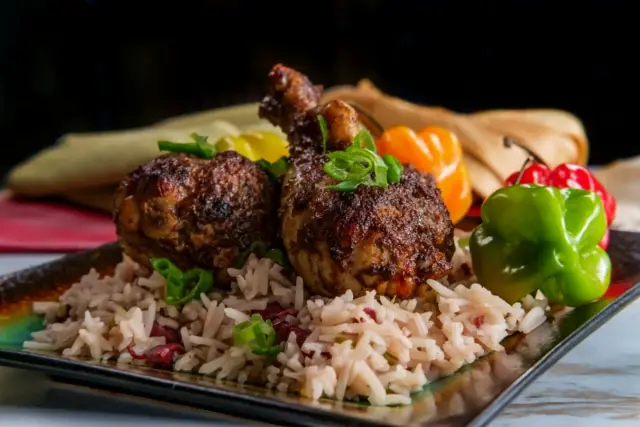
But Jamaican cuisine is not just about the food itself. To truly understand the richness of Jamaican food, we must delve into the vibrant food culture surrounding it. From the sense of community fostered through shared meals to the importance of local ingredients, Jamaican food culture reflects the warmth and hospitality of the Jamaican people.
So, we invite you to join us in celebrating the vibrant flavors and cultural significance of Jamaican cuisine. Whether you’re trying your hand at cooking traditional Jamaican recipes or simply savoring the taste of the Jamaican national dish in a local restaurant, we hope that this article has inspired you to embrace the richness and diversity of Jamaican food culture.
How Healthy is Jamaican Food?
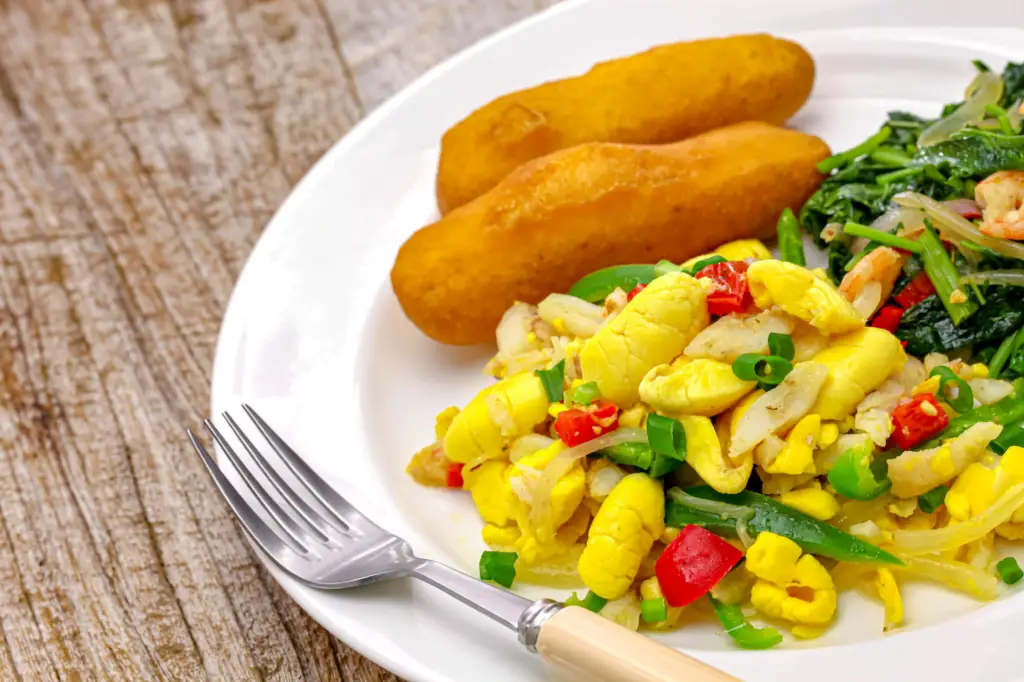
Jamaican food boasts a rich history and diverse influences, creating a unique flavor fusion. But how does this translate to health and well-being? Let’s explore the dance between taste and well-being in Jamaica:
Spicy Secrets to a Healthy Plate
Forget greasy stereotypes! Authentic Jamaican cuisine can be surprisingly healthy. Imagine lean, jerked meats, smoked or grilled with flavorful spices instead of calorie-laden sauces. Then, picture fresh vegetables bursting with vitamins, bathed in a curried embrace for a delicious and nutritious boost.
Don’t forget the beans (peas), packed with protein and fiber, adding that satisfying punch to your meal. Grilled over fried is the golden rule – keeping your plate lighter and your heart happier.
The Island’s Health Pulse
While life expectancy in Jamaica is on the rise, reaching 72.4 years in 2023, there are challenges to address. Overweight and obesity rates paint a concerning picture, affecting almost 63% of women and 47% of men.
Even children are impacted, with 8.3% under 5 falling into this category. Tobacco use among adolescents and adults also raises concerns.
Addressing the Gap
Thankfully, the beat of change is strong! The National Food Based Dietary Guidelines guide Jamaicans towards healthier eating, aiming to prevent chronic diseases.
Additionally, efforts are underway to combat lifestyle illnesses linked to diet, including diabetes and hypertension.
The Final Note
Jamaican cuisine can be a delicious symphony of health and flavor. By making mindful choices, like opting for grilled options and embracing the bounty of vegetables, you can savor the best of both worlds.
Remember, the journey towards well-being is a collaborative effort, and Jamaica is actively moving towards a healthier future, one flavorful bite at a time!
References
- hia.paho.org
- paho.org
- jamaica-gleaner.com
- moh.gov.jm
- jis.gov.jm
- island-spot.com
- wellcomecollection.org
- worldlifeexpectancy.com
Jamaican Food Examples

In the quest to explore different cuisines, I found myself captivated by the vibrant flavors and unique spices of Jamaican food. I embarked on a culinary journey, immersing herself in the rich culinary traditions of the island.
Through my exploration, I discovered that Jamaican food is a delightful fusion of various cultural influences, resulting in a harmonious blend of flavors. Some notable Jamaican food examples include jerk chicken, curry goat, ackee and saltfish, and plantain fritters.
These dishes intrigued my taste buds, and I couldn’t help but marvel at the exquisite combination of sweet, spicy, and savory flavors that are characteristic of Jamaican cuisine.
Popular Jamaican Recipes you can Try at Home
When it comes to Jamaican cuisine, there are several dishes that have gained worldwide popularity for their unique and flavorful taste. Here are some of the most popular Jamaican recipes that you should definitely try:
Jamaican Food – Escovitch Fish (A Close Relative of The Spanish Escabeche

Discovering Jamaican Culinary Delights: Escovitch Fish
Jamaican cuisine is a tapestry of bold flavors, and Escovitch Fish is a true gem within this vibrant culinary landscape. Originating from the fusion of Spanish and African influences, this dish perfectly exemplifies the island’s rich history and diverse cultural heritage.
A close relative of the Spanish escabeche, Jamaican Escovitch Fish offers a tantalizing blend of fried fish infused with a zesty, pickled vegetable medley.
Jamaican Food – Escovitch Fish Ingredients:
- 4 whole snapper or any firm-fleshed fish
- 1 cup all-purpose flour
- Salt and pepper to taste
- Vegetable oil for frying
- 1 cup thinly sliced carrots
- 1 cup thinly sliced bell peppers (assorted colors)
- 1 cup thinly sliced onions
- 1 Scotch bonnet pepper, sliced (seeds removed for less heat)
- 1 cup vinegar
- 1/2 cup water
- 1 tablespoon sugar
- 1 teaspoon mustard seeds
- 4 pimento seeds (allspice berries)
- 2 sprigs thyme
- 4 slices of lime for garnish
Jamaican Food – Escovitch Fish Recipe:
1. Prepare the Fish:
- Clean and gut the fish, leaving them whole.
- Season with salt and pepper.
- Coat each fish with flour, shaking off excess.
2. Fry the Fish:
- Heat vegetable oil in a pan over medium-high heat.
- Fry the fish until golden brown and crispy on both sides.
- Place the fried fish on a paper towel to absorb excess oil.
3. Pickle the Vegetables:
- In a separate pan, combine vinegar, water, sugar, mustard seeds, pimento seeds, and thyme.
- Bring the mixture to a boil, then reduce heat.
- Add sliced carrots, bell peppers, onions, and Scotch bonnet pepper.
- Simmer until vegetables are slightly tender but still crisp.
4. Assemble and Serve:
- Arrange the fried fish on a serving platter.
- Pour the pickled vegetables and sauce over the fish.
- Garnish with slices of lime.
Serving Size:
- This recipe serves 4 people.
Estimated Cooking Time:
- 30 minutes.
Nutritional Information (Per Serving):
- Calories: 350
- Protein: 25g
- Fat: 15g
- Carbohydrates: 30g
- Fiber: 5g
Jamaican Escovitch Fish is a delightful harmony of textures and tastes, combining the crispiness of fried fish with the tangy and slightly sweet pickled vegetables. It’s a dish that captures the essence of Jamaica’s culinary heritage and is sure to transport your taste buds to the sun-soaked shores of the Caribbean.
Jamaican Food – Ackee Fruit

Exploring Jamaica’s Culinary Crown Jewel: Ackee Fruit
Embark on a flavorful journey as we delve into the heart of Jamaican cuisine with the Ackee Fruit. A symbol of Jamaica and a crucial element of the national dish, Ackee and Saltfish, this fruit has a fascinating history.
Originally native to West Africa, ackee made its way to Jamaica through the transatlantic slave trade. It has since become an integral part of the island’s food culture, celebrated for its unique taste and vibrant yellow hue.
Jamaican Food – Ackee Fruit Ingredients:
- 2 cups fresh ackee, cleaned and boiled
- 1 cup salted codfish, soaked and flaked
- 1 onion finely chopped
- 1 bell pepper, diced (assorted colors)
- 2 tomatoes, chopped
- 2 cloves garlic, minced
- 1 Scotch bonnet pepper, sliced (seeds removed for less heat)
- 2 tablespoons vegetable oil
- Salt and black pepper to taste
- Fresh thyme for garnish
Jamaican Food – Ackee Fruit Recipe:
1. Prepare the Ackee:
- Remove the seeds and red membrane from the ackee pods.
- Boil the ackee in salted water until tender (about 15 minutes).
- Drain and set aside.
2. Soak and Flake the Codfish:
- Soak the salted codfish in water for a few hours to remove excess salt.
- Boil the codfish until it flakes easily.
- Flake the codfish into bite-sized pieces.
3. Sauté Aromatics:
- Heat vegetable oil in a pan over medium heat.
- Sauté chopped onions, minced garlic, and sliced Scotch bonnet pepper until aromatic.
4. Add Vegetables:
- Add diced bell peppers and chopped tomatoes to the pan.
- Cook until the vegetables are tender.
5. Combine Ackee and Codfish:
- Gently fold in the boiled ackee and flaked codfish into the vegetable mixture.
- Stir carefully to avoid mashing the ackee.
6. Season and Garnish:
- Season with salt and black pepper to taste.
- Garnish with fresh thyme.
Serving Size:
- This recipe serves 4 people.
Estimated Cooking Time:
- 30 minutes.
Nutritional Information (Per Serving):
- Calories: 280
- Protein: 18g
- Fat: 10g
- Carbohydrates: 25g
- Fiber: 5g
Ackee and Saltfish showcase the unique and delectable qualities of the ackee fruit, making it a beloved staple in Jamaican kitchens. The dish is not just a culinary delight but a testament to the rich tapestry of Jamaica’s history and cultural heritage.
Jamaican Food – Ital Stews

Immersing in the Essence of Jamaica: The Story of Ital Stews
Let’s delve into the heart of Jamaican culture with Ital Stews, a culinary tradition rooted in the Rastafarian lifestyle. “Ital” refers to natural, pure, and clean ingredients, reflecting the Rastafarian philosophy of living in harmony with nature.
Originating in the hills of Jamaica, Ital Stews are a celebration of plant-based goodness, capturing the vibrant flavors and spirit of the island.
Jamaican Food – Ital Stews Ingredients:
- 1 cup dried red peas, soaked overnight
- 1 cup pumpkin, diced
- 1 cup sweet potato, diced
- 1 cup okra, sliced
- 1 cup callaloo or spinach, chopped
- 1 cup coconut milk
- 2 tablespoons coconut oil
- 2 scallions, chopped
- 2 sprigs thyme
- 2 garlic cloves, minced
- 1 Scotch bonnet pepper, whole (optional for heat)
- Salt and pepper to taste
Jamaican Food – Ital Stews Recipe:
1. Prepare the Peas:
- Drain soaked red peas and place them in a large pot.
- Cover with water and bring to a boil.
- Simmer until peas are tender (about 45 minutes to 1 hour).
2. Add Vegetables:
- Once peas are tender, add diced pumpkin, sweet potato, and sliced okra to the pot.
3. Infuse with Flavor:
- Pour in coconut milk, add coconut oil, and stir well.
- Add chopped scallions, minced garlic, thyme, and Scotch bonnet pepper (if using).
- Season with salt and pepper.
4. Simmer to Perfection:
- Allow the stew to simmer until vegetables are tender, and flavors meld together (about 30 minutes).
5. Stir in Callaloo:
- Add chopped callaloo or spinach to the pot and cook until wilted.
6. Serve and Enjoy:
- Remove the Scotch bonnet pepper before serving.
- Ladle Ital Stew into bowls and savor the vibrant, plant-powered flavors.
Serving Size:
- This recipe serves 4 people.
Estimated Cooking Time:
- 2 hours (including soaking time for peas).
Nutritional Information (Per Serving):
- Calories: 320
- Protein: 8g
- Fat: 14g
- Carbohydrates: 45g
- Fiber: 12g
Ital Stews not only embrace the rich agricultural bounty of Jamaica but also embody a holistic and mindful approach to food. This hearty and nutritious dish invites you to experience the authentic taste of Jamaican Ital cuisine while embracing the principles of vitality and natural living.
Jamaican Food – Oxtail

Jamaican Culinary Heritage: Savoring the Richness of Oxtail
Let’s embark on a culinary journey to Jamaica, where the vibrant and flavorful Oxtail dish has become a cherished tradition. Originating from the Caribbean, this hearty recipe showcases the island’s fusion of African, Spanish, and indigenous influences.
Oxtail, once considered a humble cut, has transformed into a Jamaican culinary masterpiece, simmered to perfection in a rich and aromatic stew.
Jamaican Food – Oxtail Ingredients:
- 3 lbs oxtail, cut into segments
- 2 tablespoons all-purpose seasoning
- 2 teaspoons thyme, dried
- 1 teaspoon paprika
- 1 teaspoon garlic powder
- 1 teaspoon onion powder
- 1 teaspoon black pepper
- 2 tablespoons vegetable oil
- 1 large onion, chopped
- 2 carrots, diced
- 2 stalks celery, chopped
- 4 cloves garlic, minced
- 2 cups beef broth
- 1 can (14 oz) crushed tomatoes
- 2 tablespoons tomato paste
- 2 sprigs fresh thyme
- Salt to taste
Jamaican Food – Oxtail Recipe:
1. Marinate Oxtail:
- In a bowl, rub oxtail segments with all-purpose seasoning, dried thyme, paprika, garlic powder, onion powder, and black pepper.
- Let it marinate for at least 30 minutes.
2. Brown Oxtail:
- Heat vegetable oil in a large pot over medium-high heat.
- Brown marinated oxtail on all sides.
3. Sauté Vegetables:
- Add chopped onion, diced carrots, chopped celery, and minced garlic to the pot.
- Sauté until vegetables are tender.
4. Simmer Oxtail:
- Pour in beef broth, crushed tomatoes, and tomato paste.
- Add fresh thyme sprigs.
- Season with salt to taste.
5. Slow Cook to Perfection:
- Bring the pot to a boil, then reduce heat to low.
- Cover and let it simmer for 2 to 2.5 hours or until oxtail is tender.
6. Serve and Enjoy:
- Remove thyme sprigs before serving.
- Serve the succulent Jamaican Oxtail over rice, beans, or your favorite side.
Serving Size:
- This recipe serves 6 people.
Estimated Cooking Time:
- 3 hours.
Nutritional Information (Per Serving):
- Calories: 500
- Protein: 40g
- Fat: 30g
- Carbohydrates: 15g
- Fiber: 3g
Jamaican Oxtail is a testament to the island’s culinary ingenuity, transforming simple ingredients into a complex and savory dish. Whether enjoyed in the heart of Jamaica or recreated in your own kitchen, this Oxtail recipe promises a taste of the Caribbean’s rich and diverse flavors.
Jamaican Food – Brown Stew Chicken

Jamaican Culinary Delight: Unveiling the Essence of Brown Stew Chicken
Delve into the heart of Jamaica’s culinary tapestry with Brown Stew Chicken, a dish that embodies the island’s rich history and diverse flavors. Rooted in a fusion of African, Spanish, and indigenous influences, this iconic recipe has become a staple in Jamaican households, reflecting the warmth and vibrancy of the culture.
Brown Stew Chicken, slow-cooked to perfection, showcases the art of blending aromatic spices, creating a mouthwatering experience that resonates with the soul.
Jamaican Food – Brown Stew Chicken Ingredients:
- 2 lbs chicken pieces (bone-in, skin-on)
- 2 tablespoons all-purpose seasoning
- 1 teaspoon thyme, dried
- 1 teaspoon paprika
- 1 teaspoon garlic powder
- 1 teaspoon onion powder
- 1 teaspoon black pepper
- 2 tablespoons vegetable oil
- 1 onion, sliced
- 2 bell peppers, sliced
- 2 carrots, sliced
- 4 cloves garlic, minced
- 1 cup chicken broth
- 1/4 cup ketchup
- 2 tablespoons soy sauce
- 2 tablespoons Worcestershire sauce
- Salt to taste
- Fresh parsley for garnish (optional)
Jamaican Food – Brown Stew Chicken Recipe:
1. Season the Chicken:
- Rub chicken pieces with all-purpose seasoning, dried thyme, paprika, garlic powder, onion powder, and black pepper.
2. Brown the Chicken:
- Heat vegetable oil in a large pot over medium-high heat.
- Brown the seasoned chicken pieces on all sides.
3. Sauté Vegetables:
- Add sliced onion, bell peppers, carrots, and minced garlic to the pot.
- Sauté until vegetables are slightly softened.
4. Create the Stew Base:
- Pour in chicken broth, ketchup, soy sauce, and Worcestershire sauce.
- Stir to combine, creating a flavorful stew base.
- Season with salt to taste.
5. Simmer to Perfection:
- Bring the pot to a boil, then reduce heat to low.
- Cover and let it simmer for 30-40 minutes until the chicken is fully cooked and tender.
6. Garnish and Serve:
- Garnish with fresh parsley if desired.
- Serve Brown Stew Chicken over rice, with traditional rice and peas, or your preferred side.
Serving Size:
- This recipe serves 4 people.
Estimated Cooking Time:
- 1 hour.
Nutritional Information (Per Serving):
- Calories: 400
- Protein: 30g
- Fat: 20g
- Carbohydrates: 25g
- Fiber: 4g
Brown Stew Chicken encapsulates the soulful flavors of Jamaica, inviting you to experience the warmth and tradition of this beloved Caribbean dish. Whether enjoyed on the island or recreated in your own kitchen, it promises a delightful journey into Jamaican culinary excellence.
Jamaican Food – Run Down (Run-Dun)

Jamaica’s Culinary Heritage: Unraveling the Tale of Run Down (Run-Dun)
Embark on a flavorful journey through Jamaica’s culinary history with Run Down, a dish deeply rooted in the island’s vibrant culture. Originating from the Arawak and Maroon communities, Run Down reflects the fusion of indigenous, African, and European influences that shape Jamaican cuisine.
This hearty and savory stew, known locally as “Run-Dun,” is a celebration of the island’s rich fishing heritage, featuring a delightful medley of seafood and coconut milk.
Jamaican Food – Run Down Ingredients:
- 1 lb mixed seafood (shrimp, fish, lobster, or crab)
- 1 onion, finely chopped
- 2 cloves garlic, minced
- 1 scallion, chopped
- 1 sprig thyme
- 1 scotch bonnet pepper, minced
- 1 cup coconut milk
- 1 cup fish or vegetable broth
- 2 tomatoes, diced
- 1 bell pepper, sliced
- 1 cup okra, sliced
- 2 tablespoons vegetable oil
- Salt and pepper to taste
- Fresh cilantro for garnish
Jamaican Food – Run Down Recipe:
1. Prepare the Seafood:
- Clean and devein shrimp, fillet fish, and prepare other seafood as needed.
2. Sauté Aromatics:
- In a large pot, heat vegetable oil over medium heat.
- Sauté onions, garlic, scallion, thyme, and scotch bonnet pepper until fragrant.
3. Add Coconut Milk and Broth:
- Pour in coconut milk and fish or vegetable broth.
- Bring the mixture to a simmer, allowing flavors to meld.
4. Incorporate Vegetables:
- Add diced tomatoes, sliced bell pepper, and okra to the pot.
- Let the vegetables cook until they are tender.
5. Introduce Seafood:
- Gently add the prepared seafood to the pot.
- Simmer until the seafood is cooked through.
6. Season and Garnish:
- Season with salt and pepper to taste.
- Garnish with fresh cilantro before serving.
Serving Size:
- This recipe serves 4 people.
Estimated Cooking Time:
- 30-40 minutes.
Nutritional Information (Per Serving):
- Calories: 300
- Protein: 25g
- Fat: 15g
- Carbohydrates: 15g
- Fiber: 3g
Run Down encapsulates the essence of Jamaican coastal living, bringing together fresh seafood and the creamy richness of coconut milk. Dive into this delectable stew and let the flavors of Jamaica transport you to the sun-soaked shores of the Caribbean.
Jamaican Food – Pepper Pot Soup

Discovering Jamaica’s Culinary Tapestry: Pepper Pot Soup Unveiled
Embark on a culinary expedition through the heart of Jamaica with Pepper Pot Soup, a dish that weaves together the island’s rich history and diverse flavors. Originating from the Taino and Arawak indigenous communities, this hearty soup represents the amalgamation of Jamaican, African, and European culinary influences.
Pepper Pot Soup is a comforting, one-pot wonder that has become a beloved tradition, showcasing the vibrant essence of Jamaican cuisine.
Jamaican Food – Pepper Pot Soup
Ingredients:
- 1 lb callaloo leaves, chopped
- 1 lb spinach, chopped
- 1 lb okra, sliced
- 1 lb salted beef, soaked and diced
- 1 onion, chopped
- 2 scallions, chopped
- 2 cloves garlic, minced
- 1 scotch bonnet pepper, whole
- 1 cup yams, diced
- 1 cup sweet potatoes, diced
- 1 cup carrots, diced
- 1 cup Irish potatoes, diced
- 1 cup coconut milk
- 1 tablespoon vegetable oil
- Salt and pepper to taste
- 8 cups water
- 2 tablespoons fresh thyme, chopped
Jamaican Food – Pepper Pot Soup Recipe:
1. Prepare Ingredients:
- Soak salted beef in water to reduce saltiness.
- Chop callaloo leaves, spinach, onion, scallions, and thyme.
2. Saute Aromatics:
- In a large pot, heat vegetable oil over medium heat.
- Saute onions, scallions, and garlic until fragrant.
3. Add Salted Beef:
- Add diced salted beef to the pot.
- Stir and cook until the beef is slightly browned.
4. Create the Base:
- Pour in water, coconut milk, and add the scotch bonnet pepper.
- Bring the mixture to a boil.
5. Introduce Vegetables:
- Add yams, sweet potatoes, carrots, and Irish potatoes.
- Simmer until the vegetables are tender.
6. Incorporate Greens:
- Add chopped callaloo leaves, spinach, and sliced okra.
- Simmer until the greens are wilted.
7. Season and Garnish:
- Season with salt, pepper, and fresh thyme.
- Remove the scotch bonnet pepper.
- Serve hot, garnished with additional thyme if desired.
Serving Size:
- This recipe serves 6 people.
Estimated Cooking Time:
- 45-60 minutes.
Nutritional Information (Per Serving):
- Calories: 250
- Protein: 15g
- Fat: 10g
- Carbohydrates: 30g
- Fiber: 7g
Pepper Pot Soup encapsulates the soulful flavors of Jamaica, inviting you to savor the warmth and tradition of this beloved Caribbean dish. Whether enjoyed on the island or recreated in your own kitchen, it promises a delightful journey into Jamaican culinary excellence.
Jamaican Food – Fish Tea

Exploring Jamaica’s Coastal Flavors: Fish Tea Unveiled
Delve into the coastal charm of Jamaica with the iconic Fish Tea, a traditional dish that captures the essence of the island’s seafood-rich culinary heritage.
Originating from the fusion of African, European, and indigenous Taino influences, Fish Tea is a comforting and flavorful fish soup that has become a staple in Jamaican households. Embark on a culinary journey as we unravel the secrets behind this soul-warming delicacy.
Jamaican Food – Fish Tea Ingredients:
- 1 lb fish fillets (snapper or kingfish), cut into chunks
- 1 onion, finely chopped
- 2 scallions, chopped
- 2 cloves garlic, minced
- 1 scotch bonnet pepper, seeds removed and minced
- 1 sprig thyme
- 1 cup yams, diced
- 1 cup sweet potatoes, diced
- 1 cup carrots, sliced
- 1 cup Irish potatoes, diced
- 1 cup okra, sliced
- 2 tablespoons vegetable oil
- 8 cups water
- Salt and pepper to taste
- 1 lime, juiced
Jamaican Food – Fish Tea Recipe:
1. Prep the Fish:
- Clean and cut the fish fillets into bite-sized chunks.
- Season with salt, pepper, and lime juice. Set aside.
2. Sauté Aromatics:
- In a large pot, heat vegetable oil over medium heat.
- Saute onions, scallions, garlic, and scotch bonnet pepper until fragrant.
3. Build the Broth:
- Add water, thyme, yams, sweet potatoes, carrots, and Irish potatoes to the pot.
- Bring the mixture to a boil, then reduce heat to simmer.
4. Add Fish and Okra:
- Gently place the seasoned fish chunks into the pot.
- Add sliced okra to the simmering broth.
5. Simmer to Perfection:
- Allow the soup to simmer until the fish is cooked through and the vegetables are tender.
6. Season and Serve:
- Season with salt and pepper to taste.
- Serve hot, garnished with additional thyme if desired.
Serving Size:
- This recipe serves 4 people.
Estimated Cooking Time:
- 30-40 minutes.
Nutritional Information (Per Serving):
- Calories: 180
- Protein: 20g
- Fat: 5g
- Carbohydrates: 15g
- Fiber: 4g
Fish Tea embodies the seaside allure of Jamaican cuisine, offering a taste of the island’s maritime bounty. Whether relished by the beach or in the comfort of your home, this aromatic and hearty soup promises to transport you to the vibrant shores of Jamaica.
Jamaican Food – Jamaican Corn Soup

Jamaica’s Hearty Delight: Corn Soup Chronicles
Embark on a culinary voyage through the heart of Jamaica with the soul-warming Jamaican Corn Soup. Rooted in the island’s rich cultural tapestry, this flavorful soup has become a beloved comfort food.
Originating from the fusion of African, Indian, and Caribbean influences, Jamaican Corn Soup reflects the diverse heritage of the island. Let’s delve into the vibrant history and savor the essence of this Jamaican classic.
Jamaican Food – Jamaican Corn Soup Ingredients:
- 1 cup yellow split peas, soaked overnight
- 1 lb chicken, cut into bite-sized pieces
- 1 cup corn kernels
- 1 cup carrots, diced
- 1 cup yams, diced
- 1 cup Irish potatoes, diced
- 1 onion, finely chopped
- 2 cloves garlic, minced
- 2 stalks scallion, chopped
- 1 sprig thyme
- 2 pimento seeds
- 1 scotch bonnet pepper, whole
- 1 can coconut milk
- Salt and pepper to taste
- 8 cups water
- 2 tablespoons vegetable oil
Jamaican Food – Jamaican Corn Soup Recipe:
1. Prepare Split Peas:
- Drain soaked split peas and set aside.
2. Saute Aromatics:
- In a large pot, heat vegetable oil over medium heat.
- Saute onions, garlic, and scallions until softened.
3. Build the Base:
- Add chicken pieces to the pot and brown them.
- Pour in water, coconut milk, split peas, and pimento seeds.
- Bring to a boil, then reduce heat to simmer.
4. Add Vegetables:
- Toss in corn, carrots, yams, Irish potatoes, thyme, and scotch bonnet pepper.
- Simmer until vegetables are tender and chicken is cooked through.
5. Season to Perfection:
- Season with salt and pepper to taste.
- Remove thyme sprig and scotch bonnet pepper before serving.
6. Serve and Enjoy:
- Ladle the soup into bowls and serve hot.
Serving Size:
- This recipe serves 6 people.
Estimated Cooking Time:
- 1 hour and 15 minutes.
Nutritional Information (Per Serving):
- Calories: 350
- Protein: 20g
- Fat: 15g
- Carbohydrates: 30g
- Fiber: 7g
Jamaican Corn Soup encapsulates the warmth and flavors of the island, providing a comforting experience for both locals and visitors alike. This heartwarming dish is a celebration of Jamaica’s culinary prowess, inviting you to savor a taste of the Caribbean in every spoonful.
Jamaican Food – Red Peas Soup

Discovering Jamaica’s Heart: Red Peas Soup Saga
Embark on a culinary journey through the vibrant island of Jamaica with the iconic Red Peas Soup. Rooted in the island’s rich history and influenced by African, Indian, and Caribbean traditions, this hearty soup has become a staple in Jamaican households.
The deep flavors and cultural significance of Red Peas Soup make it a true reflection of the island’s diverse heritage.
Jamaican Food – Red Peas Soup Ingredients:
- 1 cup dried red kidney beans, soaked overnight
- 1 lb beef stew meat, cubed
- 1 cup carrots, diced
- 1 cup yams, diced
- 1 cup Irish potatoes, diced
- 1 onion, finely chopped
- 2 cloves garlic, minced
- 2 stalks scallion, chopped
- 1 sprig thyme
- 2 pimento seeds
- 1 scotch bonnet pepper, whole
- 1 cup coconut milk
- Salt and pepper to taste
- 8 cups water
- 2 tablespoons vegetable oil
Jamaican Food – Red Peas Soup Recipe:
1. Prepare Red Peas:
- Drain soaked red kidney beans and set aside.
2. Brown the Beef:
- In a large pot, heat vegetable oil over medium heat.
- Brown beef stew meat in the pot.
3. Saute Aromatics:
- Add onions, garlic, and scallions to the pot and sauté until softened.
4. Build the Base:
- Pour in water, coconut milk, soaked red kidney beans, pimento seeds, and thyme.
- Bring to a boil, then reduce heat to simmer.
5. Add Vegetables:
- Toss in carrots, yams, Irish potatoes, and scotch bonnet pepper.
- Simmer until vegetables are tender and beef is cooked through.
6. Season to Perfection:
- Season with salt and pepper to taste.
- Remove thyme sprig and scotch bonnet pepper before serving.
7. Serve and Enjoy:
- Ladle the soup into bowls and serve hot.
Serving Size:
- This recipe serves 6 people.
Estimated Cooking Time:
- Approximately 1 hour and 30 minutes.
Nutritional Information (Per Serving):
- Calories: 380
- Protein: 25g
- Fat: 18g
- Carbohydrates: 30g
- Fiber: 8g
Red Peas Soup not only warms the soul but also invites you to savor the essence of Jamaica’s culinary heritage. This wholesome dish represents the heart and flavors of the island, making it a must-try for anyone eager to experience the authenticity of Jamaican cuisine.
Jamaican Food – Fried Plantain/Plantain Chips

Delving into Jamaica’s Culinary Heritage with Fried Plantains
Unveil the taste of the tropics with a beloved Jamaican snack – Fried Plantains, also known as Plantain Chips. Hailing from the Caribbean, this dish encapsulates the essence of Jamaica’s rich culinary heritage.
Plantains, a close relative of bananas, hold a special place in Jamaican cuisine, offering a sweet and savory treat that’s perfect for any occasion.
Jamaican Food – Fried Plantain Ingredients:
- 2 ripe plantains, peeled and sliced
- Vegetable oil for frying
- Salt to taste
Jamaican Food – Fried Plantain Recipe:
1. Prepare the Plantains:
- Peel the ripe plantains and cut them into thin slices.
2. Heat the Oil:
- In a deep frying pan, heat enough vegetable oil for deep-frying over medium heat.
3. Fry the Plantains:
- Carefully place the plantain slices into the hot oil, ensuring not to overcrowd the pan.
- Fry until the slices turn golden brown, flipping them to cook evenly.
4. Drain and Season:
- Remove the fried plantains from the oil and place them on a paper towel to drain excess oil.
- Sprinkle salt over the plantain chips to enhance the flavors.
5. Serve and Enjoy:
- Serve the Fried Plantains as a delightful snack or a tasty side dish.
Serving Size:
- This recipe serves 4 people.
Estimated Cooking Time:
- Approximately 15 minutes.
Nutritional Information (Per Serving):
- Calories: 120
- Total Fat: 5g
- Saturated Fat: 1g
- Sodium: 200mg
- Total Carbohydrates: 20g
- Dietary Fiber: 2g
- Sugars: 9g
- Protein: 1g
Embrace the tropical flavors of Jamaica by indulging in these crispy and flavorful Fried Plantains. Whether served as a quick snack or a delightful side dish, this dish brings a taste of the Caribbean straight to your kitchen, making it an irresistible addition to any culinary repertoire.
Jamaican Food – Callaloo

Discovering the Vibrant Flavors of Jamaican Callaloo
Embark on a culinary journey through the heart of Jamaica with the traditional dish, Callaloo. Originating from West Africa and deeply rooted in Jamaican cuisine, Callaloo showcases a tantalizing blend of flavors and vibrant ingredients.
This leafy green delight, rich in history, has become a staple in Jamaican households, bringing a taste of the island’s tropical essence to the table.
Jamaican Food – Callaloo Ingredients:
- 1 bunch of callaloo leaves, washed and chopped
- 1 small onion, finely chopped
- 2 cloves garlic, minced
- 1 medium-sized tomato, diced
- 1 scallion, finely chopped
- 1 sprig thyme
- 1 scotch bonnet pepper, seeds removed and minced
- Salt and pepper to taste
- 2 tablespoons vegetable oil
- 1 cup coconut milk
Jamaican Food – Callaloo Recipe:
1. Prep the Callaloo:
- Wash the callaloo leaves thoroughly and chop them into bite-sized pieces.
2. Sauté Aromatics:
- In a large pot, heat vegetable oil over medium heat.
- Add chopped onion, minced garlic, diced tomato, scallion, thyme, and scotch bonnet pepper.
- Sauté until the vegetables are softened.
3. Add Callaloo:
- Incorporate the chopped callaloo leaves into the pot, stirring well.
- Allow the leaves to wilt and reduce in volume.
4. Pour Coconut Milk:
- Pour in the coconut milk, ensuring an even distribution.
- Season with salt and pepper to taste.
5. Simmer to Perfection:
- Let the Callaloo simmer on low heat for approximately 15-20 minutes, allowing flavors to meld.
6. Serve and Enjoy:
- Serve this vibrant Callaloo alongside rice, bread, or your favorite Jamaican dish.
Serving Size:
- This recipe serves 4 people.
Estimated Cooking Time:
- Approximately 30 minutes.
Nutritional Information (Per Serving):
- Calories: 180
- Total Fat: 15g
- Saturated Fat: 10g
- Sodium: 200mg
- Total Carbohydrates: 10g
- Dietary Fiber: 3g
- Sugars: 3g
- Protein: 5g
Transport yourself to the Caribbean with a taste of Jamaica’s Callaloo – a dish that not only pays homage to its cultural roots but also delivers a burst of flavors that will leave your taste buds dancing with delight.
Jamaican Food – Bammy

Exploring the Essence of Jamaican Cuisine with Bammy
Dive into the heart of Jamaica’s culinary treasures with the unique and historical dish, Bammy. Originating from the indigenous Taino people, Bammy has evolved into a staple in Jamaican cuisine, deeply embedded in the island’s rich cultural tapestry.
Traditionally made from cassava, this flatbread has a historical significance, as it was a dietary staple for the Taino people long before Columbus arrived in the Caribbean.
Jamaican Food – Bammy Ingredients:
- 2 cups cassava flour
- 1 cup coconut milk
- 1/2 teaspoon salt
- Banana leaves or parchment paper for cooking
Jamaican Food – Bammy Recipe:
1. Prepare the Cassava Dough:
- In a mixing bowl, combine cassava flour and salt.
- Gradually add coconut milk, stirring continuously until a smooth dough forms.
2. Shape the Bammy:
- Take a portion of the cassava dough and shape it into a flat, round disk, approximately 6 inches in diameter.
3. Cook on Banana Leaves:
- If using banana leaves, lightly heat them over an open flame to make them pliable.
- Place the shaped bammy on the banana leaf and fold it over.
4. Cook on Griddle:
- Heat a griddle or flat pan over medium heat.
- Cook the bammy on each side for 5-7 minutes or until golden brown.
5. Serve and Enjoy:
- Serve the bammy warm with your favorite Jamaican dish, such as fish or jerk chicken.
Serving Size:
- This recipe makes approximately 4 bammy servings.
Estimated Cooking Time:
- Around 30 minutes.
Nutritional Information (Per Serving):
- Calories: 180
- Total Fat: 5g
- Saturated Fat: 4g
- Sodium: 200mg
- Total Carbohydrates: 30g
- Dietary Fiber: 3g
- Sugars: 1g
- Protein: 2g
Uncover the flavors of Jamaica’s history with Bammy, a dish that transcends time, connecting the modern palate with the indigenous roots of the Caribbean. Enjoy this delectable flatbread as a testament to the enduring culinary legacy of Jamaica.
Jamaican Food – Breadfruit

Exploring the Culinary Heritage of Jamaica with Breadfruit
Uncover the rich history and flavors of Jamaica with the versatile and delicious Breadfruit. Native to the South Pacific, Breadfruit found its way to Jamaica during the late 18th century, becoming a staple in Jamaican cuisine.
Known for its starchy, potato-like texture and subtle sweetness, Breadfruit has become a beloved ingredient in a variety of Jamaican dishes.
Jamaican Food – Breadfruit Ingredients:
- 1 ripe breadfruit
- 2 tablespoons olive oil
- 1 teaspoon salt
- 1 teaspoon black pepper
- 1 teaspoon garlic powder
- Fresh herbs (thyme or rosemary), optional
Jamaican Food – Breadfruit Recipe:
1. Prepare the Breadfruit:
- Wash and peel the breadfruit, removing the skin and core.
- Cut the breadfruit into bite-sized chunks.
2. Season the Breadfruit:
- In a bowl, toss the breadfruit chunks with olive oil, salt, black pepper, and garlic powder.
- Add fresh herbs if desired for extra flavor.
3. Roast the Breadfruit:
- Preheat the oven to 400°F (200°C).
- Spread the seasoned breadfruit on a baking sheet in a single layer.
4. Bake to Perfection:
- Bake for 25-30 minutes, turning the pieces halfway through, until golden brown and tender.
5. Serve and Enjoy:
- Serve the roasted breadfruit as a delicious side dish or enjoy it on its own.
Serving Size:
- This recipe serves 4 people.
Estimated Cooking Time:
- Approximately 40 minutes.
Nutritional Information (Per Serving):
- Calories: 180
- Total Fat: 7g
- Saturated Fat: 1g
- Sodium: 600mg
- Total Carbohydrates: 32g
- Dietary Fiber: 6g
- Sugars: 4g
- Protein: 2g
Experience the taste of Jamaica with this simple and flavorful Breadfruit recipe. Whether enjoyed as a side dish or the star of the meal, Breadfruit brings a piece of the Caribbean to your table, celebrating the island’s culinary heritage with every delicious bite.
Jamaican Food – Stamp and Go (Saltfish Fritters)

Delving into Jamaica’s Culinary Roots with Stamp and Go (Saltfish Fritters)
Embark on a culinary journey through Jamaica with Stamp and Go, a beloved dish that encapsulates the island’s vibrant flavors and rich history. Originating from the fusion of African, European, and indigenous influences, Jamaican cuisine is a tapestry of diverse tastes.
Stamp and Go, or Saltfish Fritters, showcase the Caribbean’s love for bold spices and fresh ingredients.
Jamaican Food – Stamp and Go Ingredients:
- 1 cup salted codfish (soaked and flaked)
- 1 cup all-purpose flour
- 1 teaspoon baking powder
- 1/2 teaspoon black pepper
- 1/2 cup chopped scallions
- 1/4 cup chopped bell peppers (red and green)
- 1/4 cup chopped onion
- 1 clove garlic (minced)
- 1 Scotch bonnet pepper (seeded and finely chopped)
- 3/4 cup water
- Vegetable oil (for frying)
Jamaican Food – Stamp and Go Recipe:
1. Prepare the Saltfish:
- Soak the salted codfish in water for at least 2 hours to remove excess salt.
- Boil the codfish until tender, then flake it into small pieces.
2. Mix Dry Ingredients:
- In a bowl, combine the flour, baking powder, and black pepper.
3. Add Vegetables:
- Stir in the scallions, bell peppers, onion, garlic, and Scotch bonnet pepper into the flour mixture.
4. Incorporate Saltfish:
- Gently fold in the flaked saltfish into the batter.
5. Form the Fritters:
- Gradually add water, stirring until a thick batter forms.
- Heat vegetable oil in a pan over medium heat for frying.
6. Fry to Perfection:
- Using a spoon, carefully drop spoonfuls of the batter into the hot oil.
- Fry until golden brown on both sides, ensuring the fritters are cooked through.
7. Drain and Serve:
- Remove the fritters from the oil and let them drain on paper towels.
- Serve warm and enjoy!
Serving Size:
- This recipe makes approximately 20 fritters.
Estimated Cooking Time:
- Around 30 minutes.
Nutritional Information (Per Serving – 2 Fritters):
- Calories: 120
- Total Fat: 4g
- Saturated Fat: 0.5g
- Cholesterol: 20mg
- Sodium: 400mg
- Total Carbohydrates: 15g
- Dietary Fiber: 1g
- Protein: 7g
Stamp and Go offer a delightful taste of Jamaican tradition, blending the influence of various cultures into a crispy, flavorful dish. Serve these Saltfish Fritters at your table to experience the warmth and zest of Jamaican cuisine.
Jamaican Food – Solomon Gundy

Exploring the Legacy of Solomon Gundy: A Taste of Jamaican Culinary Heritage
Dive into the flavors of Jamaica with the historical delicacy, Solomon Gundy. Originating from the island’s maritime history, this dish represents a unique fusion of African, European, and Caribbean influences.
Solomon Gundy is a Jamaican pickled (with salt) fish pâté usually served with crackers as an appetizer.
The term may come from the British word salmagundi, used to refer to a salad of many different ingredients. That term is originally from the French word salmigondis, which refers to a disparate assembly of things, ideas, or people forming an incoherent whole.
Jamaican Food – Solomon Gundy Ingredients:
- 1 cup smoked herring fillets (boned and shredded)
- 1 cup red bell peppers (finely chopped)
- 1/2 cup red onions (finely chopped)
- 1/4 cup scallions (chopped)
- 2 cloves garlic (minced)
- 1 Scotch bonnet pepper (seeded and finely chopped)
- 1/4 cup fresh lime juice
- 1/4 cup olive oil
- 1 teaspoon ground allspice
- Salt and black pepper to taste
Jamaican Food – Solomon Gundy Recipe:
1. Prepare the Herring:
- Soak the smoked herring fillets in warm water for 1-2 hours to reduce saltiness.
- Remove bones and shred the herring into small pieces.
2. Mix Vegetables:
- In a bowl, combine the shredded herring, red bell peppers, red onions, scallions, garlic, and Scotch bonnet pepper.
3. Create the Marinade:
- Whisk together lime juice, olive oil, ground allspice, salt, and black pepper in a separate bowl.
4. Marinate the Mixture:
- Pour the marinade over the herring and vegetable mixture.
- Mix thoroughly to ensure even coating.
- Cover and refrigerate for at least 2 hours or overnight.
5. Serve and Enjoy:
- Serve chilled, either as a spread on crackers or bread.
Serving Size:
- This recipe serves approximately 6 people.
Estimated Preparation Time:
- 20 minutes (plus marinating time).
Nutritional Information (Per Serving):
- Calories: 120
- Total Fat: 8g
- Saturated Fat: 1g
- Cholesterol: 20mg
- Sodium: 400mg
- Total Carbohydrates: 6g
- Dietary Fiber: 2g
- Protein: 9g
Solomon Gundy provides a delectable journey through Jamaica’s maritime history, offering a savory taste of the island’s cultural richness. Serve this dish at your table to experience the unique blend of flavors that define Jamaican culinary heritage.
Jamaican Recipes – Jerk Chicken

One of the most well-known Jamaican dishes is jerk chicken. This famous recipe involves marinating chicken in a combination of spices and herbs, including scallions, thyme, allspice, and Scotch bonnet peppers. The chicken is then grilled over an open flame, giving it a smoky and spicy flavor that is truly unique.
Here’s a recipe for Jamaican Jerk Chicken:
Jamaican Recipes – Jerk Chicken Ingredients:
For the Jerk Marinade:
- 6 green onions, chopped
- 1 onion, chopped
- 2 Scotch bonnet peppers, seeds removed (adjust to your heat preference)
- 3 cloves garlic, minced
- 3 tablespoons soy sauce
- 1 tablespoon vinegar (apple cider or white)
- 1 tablespoon vegetable oil
- Juice of 1 lime
- 3 tablespoons brown sugar
- 1 tablespoon fresh ginger, grated
- 2 teaspoons salt
- 1 teaspoon black pepper
- 1 teaspoon allspice (pimento)
- 1 teaspoon nutmeg
- 1 teaspoon cinnamon
- 1 teaspoon dried thyme
- 1/2 teaspoon ground cloves
For the Chicken:
- 4 chicken leg quarters (or 8 pieces of chicken, thighs and drumsticks)
- Lime or lemon wedges for serving
Jamaican Recipes – Preparation Instructions:
For the Jerk Marinade:
- In a blender or food processor, combine all the marinade ingredients. Blend until you get a smooth paste. If the mixture is too thick, you can add a little water to help it blend.
Marinating the Chicken:
- Clean the chicken pieces and pat them dry with paper towels.
- In a large bowl or zip-top bag, place the chicken pieces and pour the jerk marinade over them. Ensure each piece is well-coated with the marinade.
- Seal the bag or cover the bowl and refrigerate for at least 4 hours, preferably overnight, to allow the flavors to penetrate the chicken.
Cooking the Chicken:
- Preheat your grill or oven to medium-high heat. If using a grill, it’s best to use indirect heat.
- Remove the chicken from the marinade, shaking off any excess. Reserve the marinade for basting.
- Place the chicken pieces on the grill or in a roasting pan if using an oven.
- Grill the chicken for about 45 minutes to 1 hour, turning occasionally and basting with the reserved marinade until the chicken is cooked through and has a nice char on the outside. If using an oven, roast for about 45 minutes, basting occasionally.
- Ensure the internal temperature of the chicken reaches at least 75°C (165°F).
- Once cooked, remove the chicken from the grill or oven and let it rest for a few minutes.
Serve the Jamaican Jerk Chicken with lime or lemon wedges, rice and peas, or your favorite side dish. Enjoy the burst of flavors from this iconic Caribbean dish!
Note: Always be cautious when handling Scotch bonnet peppers as they are very spicy. It’s advisable to wear gloves and avoid touching your face. Adjust the number of peppers based on your heat tolerance.
Jamaican Recipes – Jamaican Curry Goat

Curry goat is a staple of Jamaican cuisine that has become popular around the world. This dish involves marinating goat meat in a curry powder and spice blend, before simmering it with potatoes, onions, and Scotch bonnet peppers. The result is a hearty and flavorful stew that is perfect for any occasion.
Here’s a recipe for Jamaican Curry Goat:
Jamaican Recipes – Jamaican Curry Goat Ingredients:
For the Curry Goat:
- 1 kg (2.2 lbs) goat meat, cut into chunks
- 3 tablespoons curry powder (preferably Jamaican curry powder)
- 1 Scotch bonnet pepper, seeds removed and finely chopped (adjust to your heat preference)
- 1 large onion, chopped
- 4 cloves garlic, minced
- 1 thumb-sized piece of ginger, grated
- 3 green onions (scallions), chopped
- 1 teaspoon dried thyme or 3 sprigs fresh thyme
- 1 teaspoon allspice (pimento) berries or ground allspice
- 1 teaspoon salt
- 1/2 teaspoon black pepper
- 2 tablespoons vegetable oil
- 1 potato, diced (optional, for thickening)
- 4 cups water or beef broth
- 1 lime or lemon (for cleaning the meat)
- 2 bay leaves (optional)
Jamaican Recipes – Preparation Instructions:
Marinating the Goat:
- Clean the goat meat with water and the juice from the lime or lemon. Rinse thoroughly and pat dry with paper towels.
- In a large bowl, combine 2 tablespoons of curry powder, Scotch bonnet pepper, onion, garlic, ginger, green onions, thyme, allspice, salt, and black pepper. Mix well to form a paste.
- Add the goat meat to the bowl and massage the marinade into the meat, ensuring each piece is well-coated.
- Cover the bowl and refrigerate for at least 4 hours, preferably overnight, to allow the flavors to marinate.
Cooking the Curry Goat:
- In a large pot or Dutch oven, heat the vegetable oil over medium heat. Add the remaining 1 tablespoon of curry powder to the oil. This will give the oil a rich curry color and flavor.
- Add the marinated goat meat to the pot, searing each piece until browned on all sides.
- Once all the meat is browned, add enough water or beef broth to cover the meat. Add the bay leaves if using.
- Bring to a boil, then reduce the heat to low, cover, and let it simmer for about 2 hours. Check occasionally and add more water or broth as needed to prevent the meat from drying out.
- After 2 hours, add the diced potato if using. This will help thicken the curry sauce.
- Continue to simmer until the meat is tender and the sauce has thickened, about another 30 minutes to 1 hour.
- Adjust salt and pepper to taste.
Serve the Jamaican Curry Goat hot with white rice or traditional rice and peas. Garnish with fresh chopped cilantro or parsley if desired. Enjoy the rich and flavorful taste of this authentic Jamaican dish!
Note: Goat meat can be tough, so it’s essential to cook it slowly to achieve a tender result. Adjust the amount of Scotch bonnet pepper based on your heat tolerance. Always be cautious when handling hot peppers.
Jamaican Recipes – Jamaican Patties

Jamaican patties are a type of pastry that is filled with either meat, vegetables, or cheese. The pastry shell is made with a combination of flour, shortening, and water, and the filling is seasoned with a blend of spices, including turmeric, paprika, and cumin. Patties are a popular street food in Jamaica and are often enjoyed as a quick snack.
Here’s a basic recipe for Jamaican Beef Patties:
Jamaican Recipes – Jamaican Patties Ingredients:
For the Filling:
- 500g ground beef
- 1 medium onion, finely chopped
- 2 cloves garlic, minced
- 1 Scotch bonnet pepper, seeds removed and finely chopped (adjust to your heat preference)
- 2 green onions, chopped
- 1 teaspoon curry powder
- 1 teaspoon dried thyme
- 1 teaspoon allspice (pimento)
- 1/2 cup breadcrumbs
- 1/2 cup beef or chicken broth
- Salt and pepper to taste
- 1 tablespoon vegetable oil
For the Pastry:
- 500g all-purpose flour
- 1/2 cup cold water
- 1 teaspoon turmeric or curry powder (for color)
- 1 teaspoon salt
- 250g cold unsalted butter, cut into small cubes
- 1 beaten egg (for egg wash)
Jamaican Recipes – Preparation Instructions:
For the Filling:
- In a large skillet, heat the vegetable oil over medium heat.
- Add the onions, garlic, and Scotch bonnet pepper. Sauté until the onions are translucent.
- Add the ground beef and cook until browned, breaking it up into small pieces.
- Stir in the curry powder, thyme, allspice, salt, and pepper.
- Add the breadcrumbs and broth. Mix well and let it simmer for about 10 minutes, or until most of the liquid has evaporated. Set aside to cool.
For the Pastry:
- In a large mixing bowl, combine the flour, turmeric (or curry powder), and salt.
- Add the cold butter cubes to the flour mixture. Using your fingers or a pastry cutter, work the butter into the flour until the mixture resembles coarse crumbs.
- Gradually add cold water, mixing until the dough comes together. Do not overwork the dough.
- Divide the dough into two, wrap in plastic wrap, and refrigerate for at least 30 minutes.
Assembling the Patties:
- Preheat your oven to 200°C (400°F).
- On a floured surface, roll out one portion of the dough to about 1/8-inch thickness.
- Using a round cutter or a bowl (about 6 inches in diameter), cut out circles from the rolled dough.
- Place about 2 tablespoons of the beef filling in the center of each circle.
- Fold the dough over the filling to create a half-moon shape. Press the edges with a fork to seal.
- Place the patties on a baking sheet lined with parchment paper.
- Brush the tops of the patties with the beaten egg to give them a golden finish.
- Bake in the preheated oven for 25-30 minutes or until the patties are golden brown.
Serve hot and enjoy your homemade Jamaican Patties!
Note: You can also experiment with different fillings like chicken, shrimp, or vegetables. Adjust the seasoning as per your preference.
Jamaican Recipes – Jamaican Rum Cake

No Jamaican meal is complete without dessert, and rum cake is one of the most popular options. This cake is made with rum-soaked dried fruit and is often topped with a buttery glaze. It has a rich and decadent flavor that is perfect for special occasions.
These are just a few examples of the many delicious dishes that make up Jamaican cuisine. Whether you’re a fan of spicy and smoky flavors or prefer something sweet and rich, there is sure to be a Jamaican recipe that will satisfy your taste buds.
Here’s a recipe for Jamaican Rum Cake:
Jamaican Recipes – Jamaican Rum Cake Ingredients:
For the Fruit Mixture:
- 1 cup prunes, chopped
- 1 cup raisins
- 1 cup currants
- 1 cup dried cherries
- 1/2 cup mixed candied peel
- 1 cup dark rum
- 1 cup red wine (preferably a sweet wine like Port or Madeira)
For the Cake:
- 1 cup unsalted butter, softened
- 1 cup dark brown sugar
- 5 large eggs
- 1 teaspoon vanilla extract
- 2 cups all-purpose flour
- 1/2 teaspoon baking powder
- 1/2 teaspoon baking soda
- 2 teaspoons mixed spice (or a blend of cinnamon, nutmeg, and allspice)
- 1/2 teaspoon salt
- 1 cup browning or dark caramel sauce (can be store-bought or homemade)
- 1/2 cup burnt sugar syrup or molasses
- 1/2 cup almond or mixed nuts (optional)
- Zest of 1 lime or lemon
- 1/2 cup reserved rum (from the soaked fruits)
Jamaican Recipes – Preparation Instructions:
Preparing the Fruit Mixture:
- In a large bowl, combine all the dried fruits and candied peel.
- Pour the rum and wine over the fruits, ensuring they are fully submerged.
- Cover the bowl and let the fruits soak for at least 24 hours, preferably up to a week, stirring occasionally.
Baking the Cake:
- Preheat your oven to 160°C (325°F). Grease and line a 9-inch round cake tin with parchment paper.
- In a large mixing bowl, cream together the softened butter and brown sugar until light and fluffy.
- Beat in the eggs, one at a time, followed by the vanilla extract.
- In a separate bowl, sift together the flour, baking powder, baking soda, mixed spice, and salt.
- Gradually fold the dry ingredients into the butter and sugar mixture.
- Add the browning or caramel sauce, burnt sugar syrup or molasses, and lime or lemon zest. Mix until well combined.
- Drain the soaked fruits, reserving the soaking liquid. Fold the soaked fruits and nuts (if using) into the cake batter.
- Pour the batter into the prepared cake tin and smooth the top.
- Bake in the preheated oven for 1.5 to 2 hours, or until a skewer inserted into the center of the cake comes out clean.
- As soon as the cake comes out of the oven, slowly drizzle the reserved rum over the top, allowing it to soak into the cake.
- Allow the cake to cool completely in the tin before removing.
Serve the Jamaican Rum Cake in slices. It’s rich, so a little goes a long way! This cake is perfect for special occasions and can be stored for several weeks, as the rum acts as a preservative.
Note: For an even richer flavor, you can periodically brush the cake with additional rum while storing it. The longer the fruits are soaked, the richer the flavor of the cake. Some families have a tradition of soaking the fruits for an entire year!
Jamaican Recipes – Ackee and Saltfish

As we explore the diverse flavors of Jamaican cuisine, we cannot skip over one of the quintessential dishes: Jamaican ackee and saltfish. This beloved dish combines the unique flavors of ackee fruit and salted codfish, resulting in a mouthwatering and satisfying meal.
The history of ackee and saltfish dates back to the days of slavery in Jamaica, when enslaved Africans were provided with salted fish by their European slave masters. The ackee fruit, native to West Africa, was brought to Jamaica by slave traders and quickly became a staple in the island’s cuisine.
Here’s a recipe for Jamaican Ackee and Saltfish:
Jamaican Recipes – Ackee and Saltfish Ingredients:
- 1 can (540g) ackee, drained (or fresh ackee if available)
- 250g salted codfish (saltfish)
- 1 large onion, chopped
- 1 bell pepper (any color), chopped
- 2 tomatoes, chopped
- 3 cloves garlic, minced
- 1 Scotch bonnet pepper, seeds removed and finely chopped (adjust to your heat preference)
- 3 green onions (scallions), chopped
- 1 teaspoon dried thyme or 3 sprigs fresh thyme
- 1/2 teaspoon black pepper
- 3 tablespoons vegetable oil or coconut oil
- Optional: 1/2 red bell pepper, chopped for color
Jamaican Recipes – Preparation Instructions:
Preparing the Saltfish:
- Rinse the salt off the saltfish and place it in a pot with enough water to cover.
- Boil the saltfish for about 20 minutes to remove most of the salt. Drain the water.
- Repeat the boiling process once more to ensure the fish isn’t too salty. After boiling, drain and let the fish cool.
- Once cooled, flake the saltfish into pieces, removing any bones and skin.
Cooking Ackee and Saltfish:
- In a large skillet or frying pan, heat the oil over medium heat.
- Add the chopped onion, bell pepper, tomatoes, garlic, and Scotch bonnet pepper. Sauté until the onions are translucent and the vegetables are softened.
- Add the flaked saltfish to the skillet and stir, allowing it to fry with the vegetables for about 5 minutes.
- Gently fold in the drained ackee. Be careful not to stir too much, as ackee is delicate and can easily break apart.
- Sprinkle in the thyme and black pepper. Gently mix everything together and let it simmer for another 5-7 minutes.
- Just before turning off the heat, add the chopped green onions and give it one last gentle stir.
Serve the Jamaican Ackee and Saltfish hot with your choice of side dishes. Popular accompaniments include fried dumplings, boiled green bananas, yam, or even rice and peas. Enjoy this flavorful and iconic Jamaican dish!
Note: Always ensure that ackee is fully ripe before cooking. Unripe ackee contains a toxin called hypoglycin. If using fresh ackee, wait until the pods open naturally, revealing the yellow flesh. Remove the seeds and the red membrane before cooking. If using canned ackee, it’s already pre-cooked and safe to eat.
However, it’s important to note that the ackee fruit must be cooked thoroughly before consumption, as it can be toxic if consumed when unripe or improperly prepared. Therefore, it’s best to purchase canned ackee fruit rather than attempting to prepare it yourself.
Overall, Jamaican ackee and saltfish is a unique and flavorful dish that is steeped in history and tradition. Its distinctive combination of ingredients creates a taste that is unlike any other, and it’s no wonder that it has become such a beloved dish in Jamaica and beyond.
Jamaican Recipes – Rice and Peas

No Jamaican meal is complete without a generous serving of rice and peas. This beloved dish is a staple of Jamaican cuisine, with a unique blend of fragrant rice, coconut milk, and kidney beans.
Despite its name, the “peas” in the dish are actually red kidney beans or sometimes gungo peas (pigeon peas). Here’s a recipe for Jamaican Rice and Peas:
Jamaican Recipes – Rice and Peas Ingredients:
- 2 cups long-grain rice (preferably parboiled or jasmine rice)
- 1 can (400g) red kidney beans or gungo peas, drained and rinsed (or use 1 cup dried beans, soaked overnight)
- 1 can (400ml) coconut milk
- 2 1/2 cups water
- 1 onion, finely chopped
- 2 cloves garlic, minced
- 1 Scotch bonnet pepper, whole (for flavor, without making the dish too spicy)
- 2 green onions (scallions), chopped
- 1 teaspoon dried thyme or 3 sprigs fresh thyme
- 1 teaspoon salt (adjust to taste)
- 1/2 teaspoon black pepper
- 1 teaspoon allspice (pimento) berries or a pinch of ground allspice
Jamaican Recipes – Preparation Instructions:
- If using dried beans, rinse them after soaking overnight. Place them in a pot with enough water to cover, and boil until they are tender but not mushy. This can take 1-2 hours. Drain and set aside.
- In a large pot or Dutch oven, add the coconut milk, water, chopped onion, garlic, whole Scotch bonnet pepper, green onions, thyme, salt, black pepper, and allspice berries. Bring to a gentle boil.
- Add the drained kidney beans or gungo peas to the pot and stir.
- Rinse the rice under cold water until the water runs clear. This helps remove excess starch and prevents the rice from becoming sticky.
- Add the washed rice to the pot, stirring to mix everything well.
- Reduce the heat to low, cover the pot with a tight-fitting lid, and let the rice simmer for about 20-25 minutes. Check occasionally to ensure the rice doesn’t stick to the bottom. If needed, add a bit more water.
- Once the rice is cooked and all the liquid has been absorbed, remove the Scotch bonnet pepper and thyme sprigs (if using fresh thyme). Fluff the rice with a fork.
- Serve the Jamaican Rice and Peas hot as a side dish with your favorite Jamaican main course, such as jerk chicken, curry goat, or oxtail.
Note:
The Scotch bonnet pepper is added whole to infuse the dish with its flavor without adding too much heat. However, if you prefer a spicier dish, you can chop the pepper before adding it. Always be cautious when handling hot peppers.
While rice and peas may seem like a simple side dish, its rich and complex flavors perfectly embody the essence of Jamaican cuisine. The creamy coconut milk and fragrant spices complement the tender rice and hearty beans, creating a dish that is both satisfying and delicious.
Whether served alongside jerk chicken or curry goat, Jamaican rice and peas are a must-try for anyone seeking to discover the unique tastes and flavors of this vibrant cuisine.
Conclusion
As we conclude this culinary journey, we hope that you have gained a newfound appreciation for the unique taste and flavors of the Jamaican national dish. Through exploring the traditional Jamaican cuisine and culinary traditions, we have uncovered the secrets of authentic Jamaican cooking and the evolution of Jamaican food culture over time.
We have highlighted some of the most popular Jamaican recipes, including the famous Jamaican jerk chicken, Jamaican ackee and saltfish, and the staple dish of rice and peas. Each dish represents a fusion of different cultural influences and the use of local ingredients that create the vibrant and dynamic flavors of Jamaican cuisine.
FAQ’s
What is the Jamaican national dish?
The Jamaican national dish is ackee and saltfish, a delicious combination of ackee fruit and salted codfish.
What are some Jamaican Food Examples?
Jamaican food examples include dishes such as jerk chicken, ackee and saltfish, oxtail stew, and curry goat. These dishes are known for their bold and vibrant flavors, incorporating a mix of spices, herbs, and tropical ingredients.
Jamaican cuisine is influenced by African, Indian, and European culinary traditions, resulting in a unique and delicious culinary experience.
What are some popular Jamaican recipes?
Some popular Jamaican recipes include jerk chicken, curry goat, oxtail stew, and Jamaican rice and peas.
How is authentic Jamaican cooking influenced?
Authentic Jamaican cooking is influenced by a fusion of flavors from African, European, and Indian cuisines.
What is the key ingredient in Jamaican rice and peas?
The key ingredient in Jamaican rice and peas is coconut milk, which gives it a rich and fragrant taste.
What is the significance of food in Jamaican society?
Food plays a significant role in Jamaican society, fostering a sense of community and celebration through shared meals.
What is the History of Jamaican Cuisine?
The history of Jamaican cuisine is rich and diverse, influenced by African, Indian, and European flavors. Traditional dishes like jerk chicken, ackee and saltfish, and curried goat reflect the island’s vibrant culture.
The fusion of ingredients and cooking techniques makes Jamaican cuisine a unique and delicious experience for food lovers.
This article was last edited on

